
 October 31, 2025 "Tricky Tactics Tackle Thieving Sunfish"
October 31, 2025 "Tricky Tactics Tackle Thieving Sunfish"
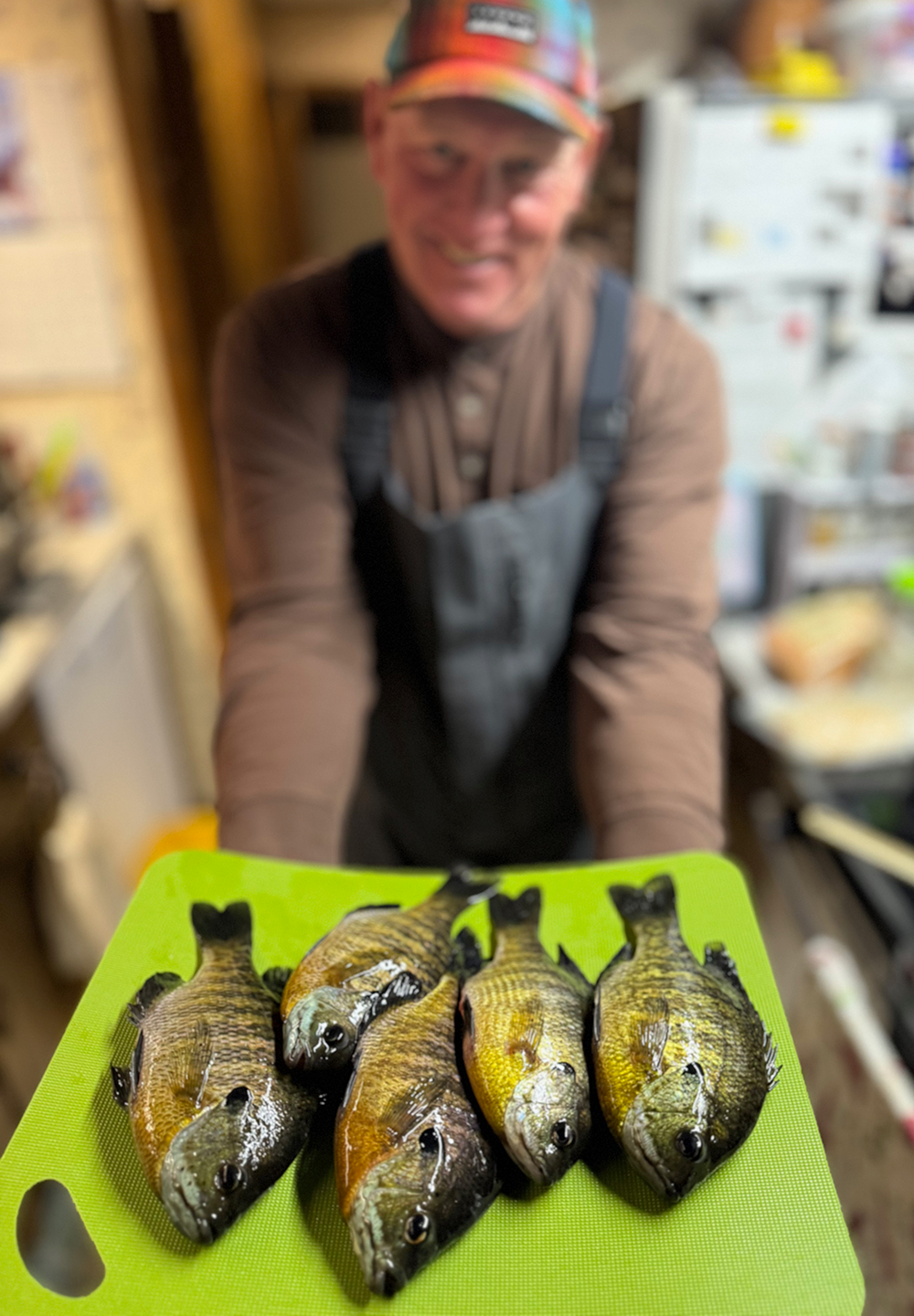 The weather was cold, air temps were in the low 40s. But the winds settled down, and the Hippie Chick was up for another adventure. So, my craving for a meal of sunfish drove thursday's agenda. Wanting to "play it safe". I decided to try a lake we’ve fished before, albeit not recently. I reasoned that finding, and catching fish, might go faster if I didn't have to learn a new lake first. It worked out, but it wasn't quite as easy as I'd imagined.
The weather was cold, air temps were in the low 40s. But the winds settled down, and the Hippie Chick was up for another adventure. So, my craving for a meal of sunfish drove thursday's agenda. Wanting to "play it safe". I decided to try a lake we’ve fished before, albeit not recently. I reasoned that finding, and catching fish, might go faster if I didn't have to learn a new lake first. It worked out, but it wasn't quite as easy as I'd imagined.
The lake, at about 500 acres is not a complex one. At the landing, surface water registered 48 to 49 degrees on my graph. I presumed that shallow shoreline weed flats would have been vacated. I anticipated finding fish either on some mid-depth, 15-to-20-foot flats, or on the single mid-lake, deep water hole. Because of its simplicity, locating fish was not challenging. Thursday, the sunnies were easily located roaming just off the flats, and along the edges of “the hole” in packs of 15 to 25 fish.
As easy as finding them was, catching them was more complicated. They were flighty, and moving constantly, so stopping, spot-locking and fishing vertically was ineffective. Every time I located a small pack of fish, we’d catch one, and then watch the screen of my graph go blank; that was one challenge.
Another frustrating aspect of catching these fish was that their feeding mood was neutral at best, maybe even negative. They would pick at the bait, stripping off the chunk of night crawler and leaving behind a bare jig head. Susan did her best, but getting one of these fish onto the hook seemed darn nearly impossible. We chatted about it and agreed that of all the frustrating moments we’ve shared fishing, “picky sunfish” account for most of them. Their excellence at stealing without being caught should be applauded by the Alexander Mundys of the world!
 Scaling down to a smaller lure was my first step toward success. A #8 size orange-black color tungsten toad tipped with 2 wax worms triggered strikes and hooked the fussy biters. That took care of the hook-ability issue, but their boat shyness was still troubling. So, the next step to success was to stop trying to stop over a school of fish. Instead, I set the Terrova at a super slow, #1 speed and crept along at about .1 to .2 MPH. The punctilious approach produced slow-but-steady action. There were times when my graph screen was blank, but as I wandered the edges of the hole, we’d occasionally encounter fish. Each time the lure entered a new school of fish, we’d get 1 or 2.
Scaling down to a smaller lure was my first step toward success. A #8 size orange-black color tungsten toad tipped with 2 wax worms triggered strikes and hooked the fussy biters. That took care of the hook-ability issue, but their boat shyness was still troubling. So, the next step to success was to stop trying to stop over a school of fish. Instead, I set the Terrova at a super slow, #1 speed and crept along at about .1 to .2 MPH. The punctilious approach produced slow-but-steady action. There were times when my graph screen was blank, but as I wandered the edges of the hole, we’d occasionally encounter fish. Each time the lure entered a new school of fish, we’d get 1 or 2.
“I think they’ll bite better at sunset,” Susan said, and as you can see by the accompanying image, she was right. As the sun dropped lower in the sky, the action began picking up. Now, instead of picking off 1 fish at a time, she caught 3 or 4 in a row, all from the same school of fish. Neither of us would describe the action as fast, but the late inning rally gave an excuse to call it a successful outing.
Just when we’d settled on calling it a day, the crappies began biting. “You’ve got to be kidding,” the Hippie Chick said. On our last drop, we had a double, and I have to admit, it was tempting to stay put and try for some more crappies. Truthfully though, we already had “Sundin-Fish” for supper, and adding crappies to the larder wasn’t necessary. So we packed up, loaded up and headed home.
Admittedly, my guidance is based on a couple of isolated fishing trips. But with water temps in the upper 40s, I do expect that my wife’s “evening bite” theory is likely to be true. During winter, most fish are easier to catch during morning and evening than they are at mid-day. From here on out, we’ll arrive a little bit later, and plan to stay on the lake(s) until the sun disappears.
Our open water season isn’t over yet, but it’s getting close to the end. We’re taking today off to enjoy Halloween with some of our grandkids. This weekend, or early next week, depending on the weather, we’re shooting for another trip or 2 before putting the boat away for winter. Then we’ll be turning our attention to the deer hunting season. We’ll let you know how the plans unfold.
Still on tap for Saturday are Questions from readers about barotrauma, forward facing sonar and angler ethics. Tune back in for those reports tomorrow. ![]() — Jeff Sundin, The Early Bird Fishing Guide Office Cell Call or Text 218-245-9858 or Email on Facebook on X
— Jeff Sundin, The Early Bird Fishing Guide Office Cell Call or Text 218-245-9858 or Email on Facebook on X
 Wired2Fish "It’s Time for Bass, Walleye and Panfish Anglers To Speak Up"
Wired2Fish "It’s Time for Bass, Walleye and Panfish Anglers To Speak Up"
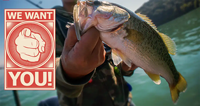 "I’m conducting research focused on the conservation of freshwater fisheries in the United States and Canada for my PhD. To date, I’ve gathered nearly 2,000 survey responses from recreational anglers regarding threats to their fisheries and potential conservation solutions, yet the dataset is currently skewed.
"I’m conducting research focused on the conservation of freshwater fisheries in the United States and Canada for my PhD. To date, I’ve gathered nearly 2,000 survey responses from recreational anglers regarding threats to their fisheries and potential conservation solutions, yet the dataset is currently skewed.
Approximately 60% of these responses are from fly anglers targeting trout in regions such as Utah and Colorado, compared to only about 15 to 20% of the responses from bass anglers. There are even fewer responses from recreational anglers that are targeting catfish, walleye, pike, panfish, or other warmwater species.
This disparity is not merely a statistical issue — it poses a serious conservation concern that could have lasting implications for the management of popular target species and ..." Read Full Article and Learn More >> "It’s Time for Bass, Walleye and Panfish Anglers To Speak Up"
More Recent Fishing Reports
Follow on X • Follow on Facebook • Bluegills 10-31 • Lake Winnie Plan 10-30 • L.O.W 10-29 • Ely MN 10-29 • Crappies 10-28 • Sundin 10-27 • Technology 10-25 • Grand Rapids 10-24 • Sundin 10-17 • Lake Winnie 10-13 • Crappies 10-12 • Lake Winnie 10-11 • Sundin 10-10 • Winnie 10-9 • Crappies 10-7 • Lake of the Woods 10-7 • Fall Turnover 10-6 • Sundin 10-5 • Lake Winnie 10-4 • Fall Turnover 10-2 • Ely MN 10-01-25 • L.O.W 10-01-25 • Walleye Limit 7-01 • Limits • Don't Land A Citation 5-1 • 200 • MN DNR Rule Changes 02-13 • MN Hall of Fame 01-24 • Charts 1-23-25 • MAPS 1-22-23 • Barotrauma Study 1-25-24 • Fish Consumption • Forward Sonar • Panfish Workgroup
 October 30, 2025 "Working the Work-Able For Lake Winnie"
October 30, 2025 "Working the Work-Able For Lake Winnie"
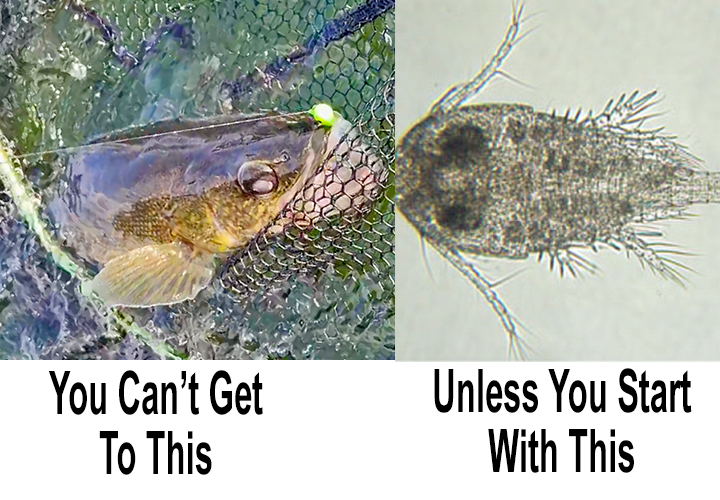 Catching walleyes on Lake Winnie is a lot of fun, and thousands, me included, target them every fishing season. Most of us have learned a good deal about where, and how to find them. That is, we know where catch them once they’ve grown into the “catch-able” size range. But those walleyes, before we find them, have already beaten the long odds. The survival of every walleye is in question from the day they’re hatched and basically, never ends. Amazingly though, enough of them survive to provide visitors to Lake Winnibigoshish with some of the best walleye fishing anywhere in the country.
Catching walleyes on Lake Winnie is a lot of fun, and thousands, me included, target them every fishing season. Most of us have learned a good deal about where, and how to find them. That is, we know where catch them once they’ve grown into the “catch-able” size range. But those walleyes, before we find them, have already beaten the long odds. The survival of every walleye is in question from the day they’re hatched and basically, never ends. Amazingly though, enough of them survive to provide visitors to Lake Winnibigoshish with some of the best walleye fishing anywhere in the country.
Yesterday, at the kickoff meeting of the Lake Winnibigoshish Workgroup, members learned more about not only walleyes but received a broad overview of what it takes to keep a large lake, like Winnie productive and healthy.
There were a lot of new faces at the gathering, so the first half of the session consisted primarily of laying groundwork. Work group members first received a thorough introduction to the project and how the group input process works. Brett Nelson, Grand Rapids Area Fisheries Supervisor, along with Dan Schermerhorn, Winnie’s Large Lake Specialist and David Weitzel, Assistant Regional Manager explained the goal, which in a nutshell, is to produce a new 10-year lake management plan for Lake Winnibigoshish.
The input provided by the Winnie workgroup does not directly lead to a full plan, that will be in the hands of fisheries staff. But group members will provide guidance aimed at helping shape the DNR management goals that reflect public sentiment. Along with guidance from the WINFIG group, DNR Fisheries staff has also planned to publish a survey aimed at the public. Anyone with an interest in fishing Winnibigoshish can participate in the survey. As of yesterday, Nelson thinks the survey will be available via the MN DNR website sometime in November. When available, announcements via DNR news releases, social media, and sporting publications will be published.
The morning session, devoted to the planned overview and preparation of the public survey, ended at about 11:45. A break for lunch gave us all time to run out and gather our thoughts before returning for a more technically oriented presentation.
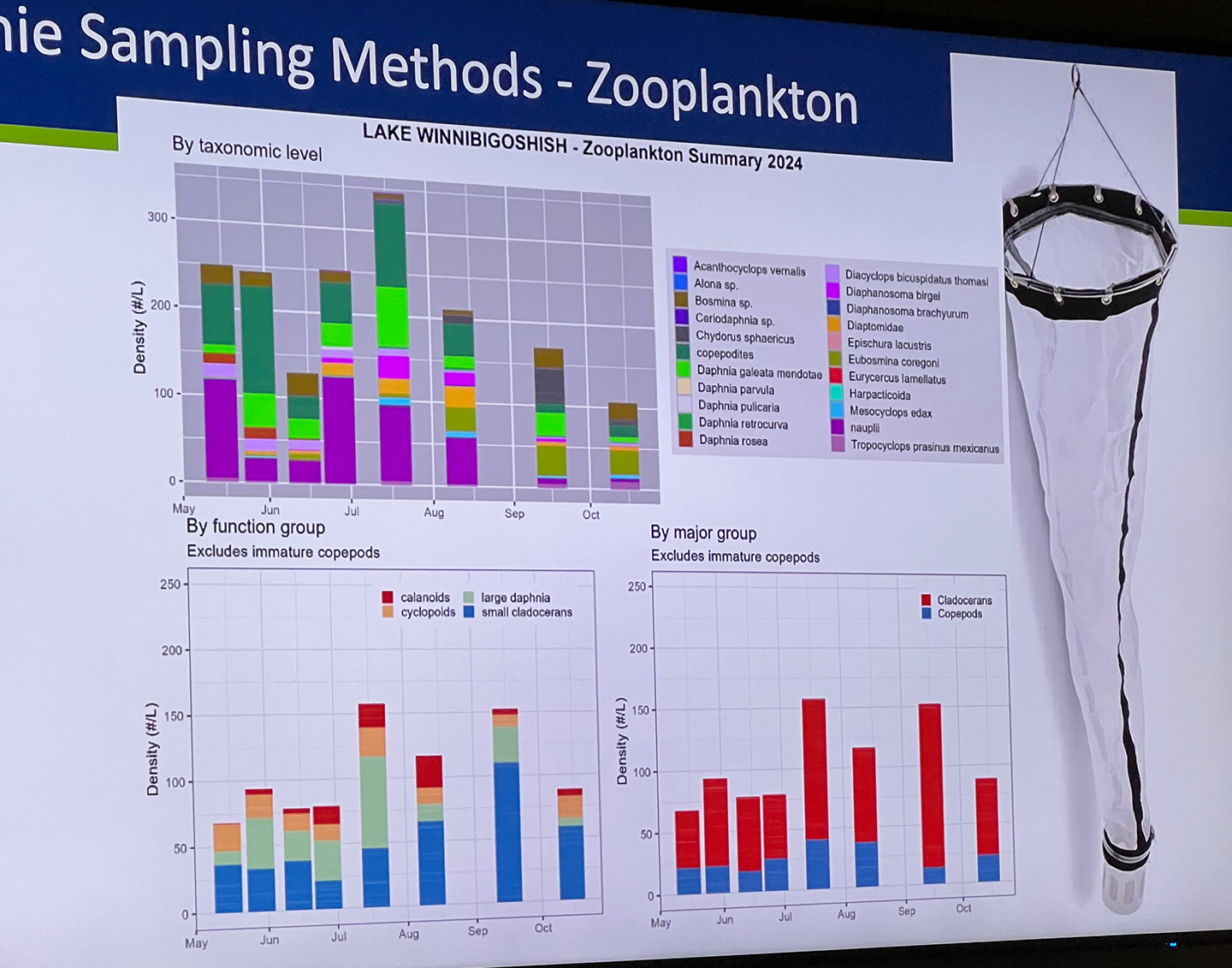 During the afternoon session, Schermerhorn led us through some of the creel survey results, test netting data and biomass studies that will influence future management of the Winnie-Cutfoot and Little Cutfoot Reservoir system. Of particular interest to me, was Schermerhorn’s presentation about the zooplankton studies which began in 2012.
During the afternoon session, Schermerhorn led us through some of the creel survey results, test netting data and biomass studies that will influence future management of the Winnie-Cutfoot and Little Cutfoot Reservoir system. Of particular interest to me, was Schermerhorn’s presentation about the zooplankton studies which began in 2012.
We’ve touched on the topic of food chain, growth rates and fish survival before. But after seeing the presentation, I realized that I need to bring you a lot more information about the health of Winnie’s most fundamental food source. Beginning about 3 days after hatching, walleyes become totally dependent on zooplankton for survival. Most likely to produce a good year’s class of walleyes is a combination of good supplies of zooplankton, fast growth rates and healthy, fat fingerlings going into the winter. So, monitoring the health of the zooplankton populations is critical to making predictions about future management strategies.
Increasing water clarity, in some circles, is generally thought to be a good thing. During the 1980s and 1990s efforts to “clean up” lakes and streams dominated the conversation among state and local water management agencies. Their efforts to “clean up” water has worked, and many of Lake Winnie’s tributaries are cleaner than they were a generation ago. However, while clean water may be good, even cleaner water is not necessarily better.
With the arrival of zebra mussels and faucet snails, the already “clean” water became even “cleaner”. The invasive invertebrate’s food source is the zooplankton that provides both food for tiny fish, and serves to reduce the overall water clarity. According to Schermerhorn, Winnie’s zooplankton stocks are still good, in fact better than some lakes which are not impacted by zebra mussels. Still, the reduction in zooplankton, and clearing water presents challenges that will also impact future management plans for the lake.
Perch, and their contribution to Winnie’s food chain got some attention yesterday too. As water conditions have changed, Lake Winnie’s Tullibee (cisco) population has declined. As the Ciscoes have disappeared, perch has become the primary source of food for predators. So, now more than ever, healthy perch populations are essential to Winnie’s predator populations.
Perch, the building block of healthy fish populations everywhere is a good place to pause. That’s because on Monday November 3, 2025 I’ll attend a meeting of another workgroup, the MN DNR Panfish Workgroup. It’s anticipated that yellow perch, and a deep dive into statewide perch populations will be in the spotlight for the panfish group. After Monday’s meeting, I’ll offer an update, and pick up where I’m leaving off the Winnie group this morning.
Today, I and the Hippie Chick are hoping to get out on another new lake to check out panfish. I’ll have a report about that tomorrow. ![]() — Jeff Sundin, The Early Bird Fishing Guide Office Cell Call or Text 218-245-9858 or Email on Facebook on X
— Jeff Sundin, The Early Bird Fishing Guide Office Cell Call or Text 218-245-9858 or Email on Facebook on X
 Lake of the Woods, LOW Tourism, October 29, 2025
Lake of the Woods, LOW Tourism, October 29, 2025
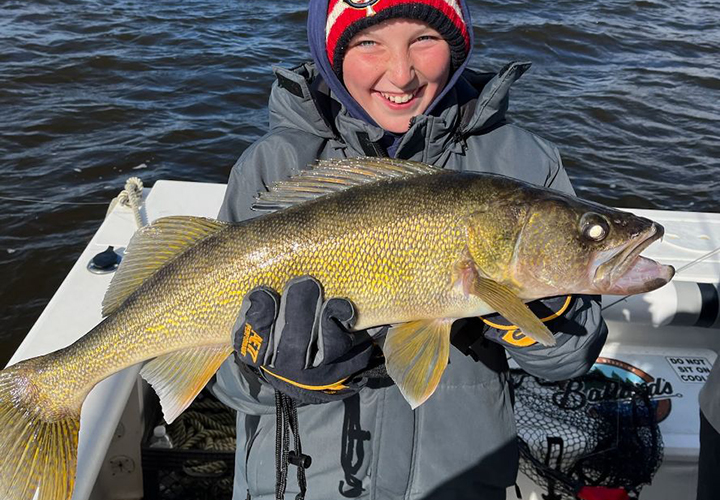 "It's been yet another good week of walleye fishing on Big Traverse Bay at the south end of Lake of the Woods. Anglers reported nice numbers of fish that continue to be found in different locations along the south shore. Key depths now range from 15 to 22 feet of water, setting up nicely for the upcoming ice fishing season.
"It's been yet another good week of walleye fishing on Big Traverse Bay at the south end of Lake of the Woods. Anglers reported nice numbers of fish that continue to be found in different locations along the south shore. Key depths now range from 15 to 22 feet of water, setting up nicely for the upcoming ice fishing season.
The fall transition bite has been consistent and action-packed. Along with the walleyes, anglers may also expect a nice mixed bag of saugers, jumbo perch, and the occasional crappie or northern pike.
Water temperatures continue to cool at a moderate pace. According to the Lake of the Woods Tourism Wave Buoys, the Big Traverse Bay surface temperature is now 49°F, down from 53°F last week. As water temperatures drop, walleyes are sliding shallower and feeding heavily in preparation for winter, which means the bite is only getting better.
The best presentation remains vertical jigging with a frozen or live emerald shiner. A few anglers are still finding success trolling crankbaits to cover water, but the classic jig-and-minnow bite is tough to beat right now. Hot jig colors this week include orange-chartreuse, pink-glow and gold-orange combinations, along with solid gold or glow white.
On the Rainy River, emerald shiners have moved into the Rainy River, though large schools have yet to arrive. Still, walleye reports were solid this week with plenty of fish being caught. Anglers are working current breaks, deeper holes, and weed edges, primarily jigging with a frozen or live shiner. Others are trolling crankbaits to cover water and locate active fish.
Sturgeon fishing is good with many anglers catching multiple fish per trip. A classic sturgeon rig loaded with crawlers. Optionally, rigs can be tipped with a shiner or two, whicj is also effective. The catch-and-release sturgeon season is in effect.
Up at the Northwest Angle, fishing continues to be excellent across the islands and reefs of the Northwest Angle on both sides of the border. A jig and minnow remains the go-to tactic on points, reefs, neck-down areas, and mud-to-rock transitions. Anglers are catching walleyes, saugers, jumbo perch, crappies, smallmouth bass, and pike in good numbers.
Muskie anglers are also finding good success as cooling water temps have fish on the move. Fall is prime time for trophy muskies over the 50-inch mark, and anglers are reporting plenty of follows and hookups on both artificial and live bait.
Guides still have openings, or bring up your own boat for that last fall fishing trip of the season." — Lake of the Woods Tourism, (800) 382-FISH
 News Release October 2025 "Upper Red Lake Walleye Regulation Winter 2025-2026"
News Release October 2025 "Upper Red Lake Walleye Regulation Winter 2025-2026"
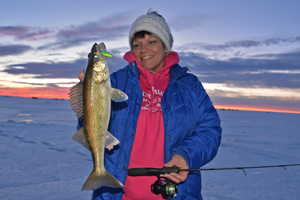 "The winter season walleye limit on Upper Red will be a four fish possession limit, with only one walleye longer than 17 inches allowed. This is a reduction from the 2025 open water season, which had a five fish possession limit.
"The winter season walleye limit on Upper Red will be a four fish possession limit, with only one walleye longer than 17 inches allowed. This is a reduction from the 2025 open water season, which had a five fish possession limit.
“Our fall assessment indicated that the walleye population continues to be in excellent shape. We are dropping the bag limit to four because the winter fishery is so popular,” said Brad Parsons, Minnesota Department of Natural Resources fisheries section manager. “The state waters of Upper Red Lake had an even higher number of ..." See Full Release October 29, 2025
 Ely Area, Arrowhead Outdoors Fishing Report October 29, 2025
Ely Area, Arrowhead Outdoors Fishing Report October 29, 2025
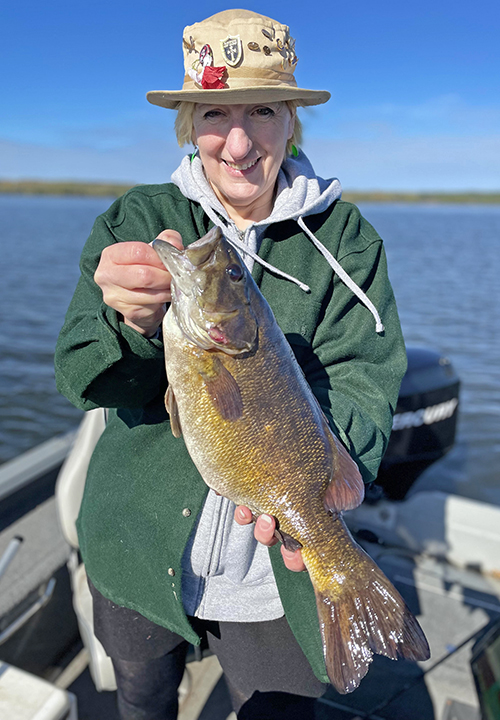 " Walleye - Nice warm weekend had fall anglers out enjoying the great fishing. Walleyes continue to be found from. 8 to 32 feet of water. Large minnows tipped on a jig or fished on a lindy rig continue to be the most popular way to catch walleyes.
" Walleye - Nice warm weekend had fall anglers out enjoying the great fishing. Walleyes continue to be found from. 8 to 32 feet of water. Large minnows tipped on a jig or fished on a lindy rig continue to be the most popular way to catch walleyes.
Anglers have been mainly working deep holes close to structures like large points or sunken islands. Handful of anglers have been trolling large crankbaits in these same areas and over large deep flats and catching some very big walleyes.
Panfish - Anglers have been reporting that they are finding crappies out over deep basins as crappies settle into their winter pattern. Anglers have been having good luck tipping small jigs with minnows and drifting over 20 to 30 feet of water.
Pike - Giant pike continue to be found staging over rocky points and river mouths as their favorite prey, ciscoes and whitefish start to spawn in the coming weeks. Large minnow baits and large suckers fished under a bobber in these areas have been very effective." — Arrowhead Outdoors, 218-365-5358
 October 28, 2025 "Ready Or Not, Here We Come" Crappies playing hide and go seek, again.
October 28, 2025 "Ready Or Not, Here We Come" Crappies playing hide and go seek, again.
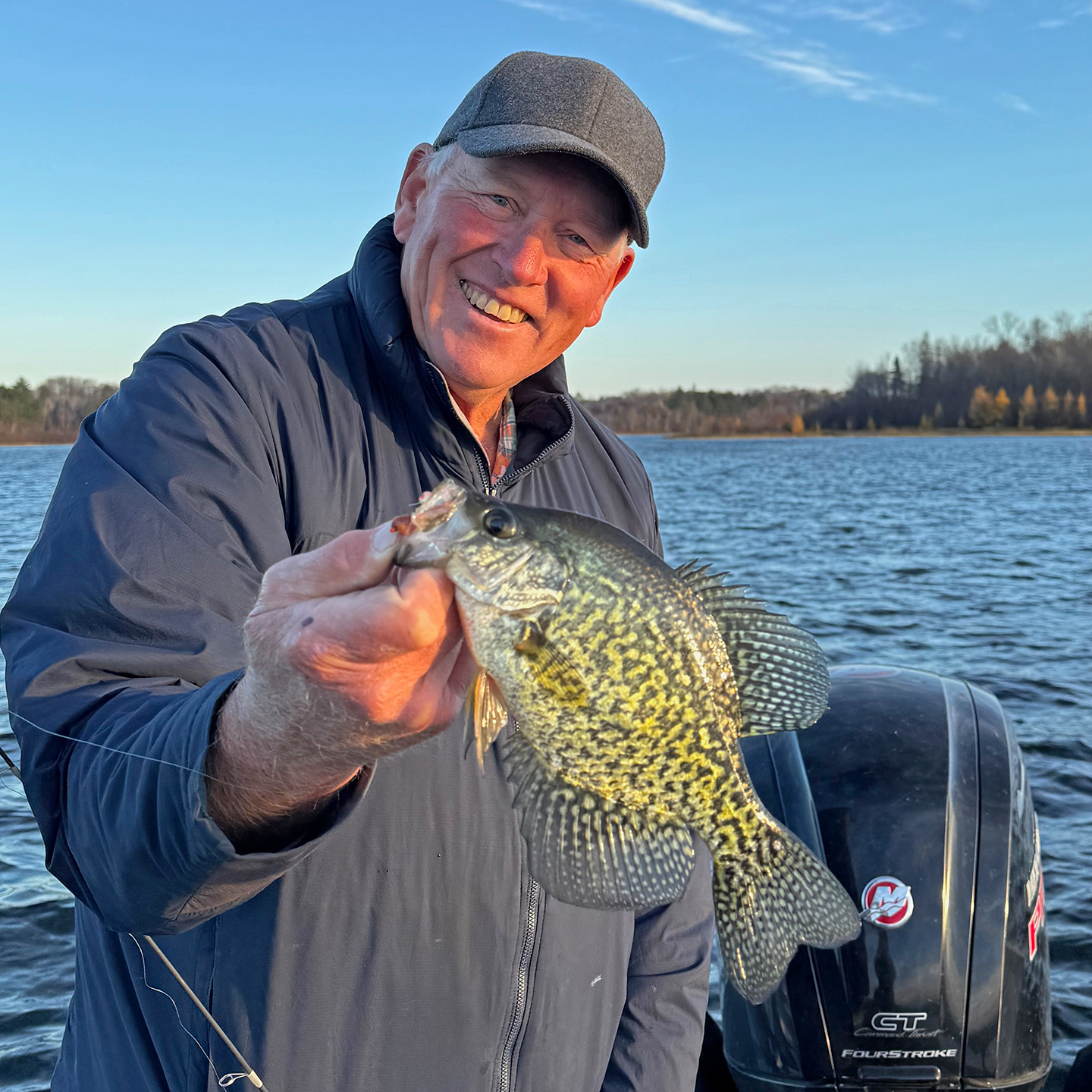 They did it to me again, crappies playing hide and seek, got me to search all the wrong places. Luckily, their little game has been going on for a couple of months already, so I’m getting used to this. It’s why I knew better than to give up too easily yesterday when I and the Hippie Chick went exploring a new crappie fishing lake.
They did it to me again, crappies playing hide and seek, got me to search all the wrong places. Luckily, their little game has been going on for a couple of months already, so I’m getting used to this. It’s why I knew better than to give up too easily yesterday when I and the Hippie Chick went exploring a new crappie fishing lake.
We didn’t start early, a mid-afternoon appointment held us in town until about 2:30. So, I think we arrived at the lake at about 3:00 and on our trip to the lake, Susan quizzed me about the game plan. I described the lake and why it was on my list of places to explore. “The small, 500-acre lake has a little bit of everything, we might find crappies, walleyes, bass or bluegills. The trick will be to see if I can check enough spots to figure out where the fish are,” I explained.
At the landing, we found dark, coffee stained, but clear water. The surface temperature was 50 degrees, which would turn out to be the uniform water temperature over most of the lake. There were lots of weeds in the shallow water, and some of them grew deep, into about 15 feet of water. The ones I observed were still green, and that was notable to me because I expected to find more dead vegetation. Even during mid-winter, green weeds hold fish, and I thought these weeds might come in handy toward sunset.
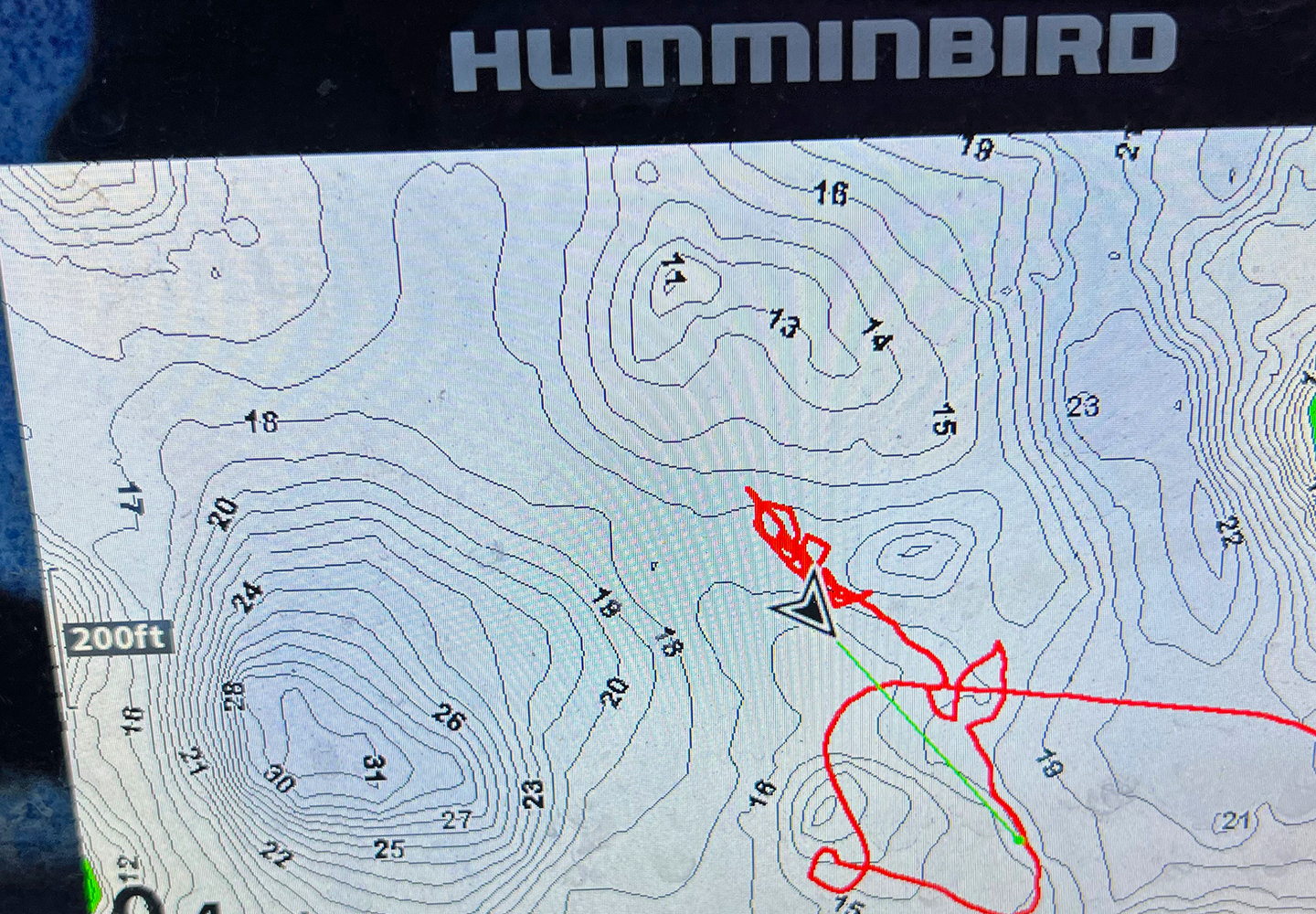 “Remember the time we fished that little lake near Ely”, I asked the Hippie Chick. Yes, she did recall that trip, we had fished all around the lake, found nothing biting, but returned to an interesting looking weed bed at sunset. Upon our return, crappies and sunfish staged an amazing end of the day rally, making our experience a happy one. In case of an emergency, the same thing could happen here, I suggested.
“Remember the time we fished that little lake near Ely”, I asked the Hippie Chick. Yes, she did recall that trip, we had fished all around the lake, found nothing biting, but returned to an interesting looking weed bed at sunset. Upon our return, crappies and sunfish staged an amazing end of the day rally, making our experience a happy one. In case of an emergency, the same thing could happen here, I suggested.
This fall, the pattern for locating crappies has been that there’s no pattern. One day I find them on the weed edges, the next trip out I find them suspended over mid-lake basins. Sometimes they’re glued to the bottom, spread horizontally across mid-lake flats. And when they’re not in those places, they might be found floating a foot or two below the lake’s surface. Yesterday, we found them high above the sparse, but still green weeds on a mid-lake flat.
Based on other lakes I’ve fished recently, mid-lake basins, or holes “should have” been populated with panfish. That’s where we found crappies last week when I fished with Rick Hastings and his crew. Yesterday though, mid lake water held nothing, I scanned a lot of steep shorelines, open water and mid-depth flats.
The screen image of my chart (enlarge) shows the nomenclature of the area where we eventually found fish. A mid-lake hole, surrounded by shallow water featuring a series of weedy bars, along with the flat of sparse weeds. You can see by my plotter trail that I never bothered looking over the deep hole. I was actually headed toward it, but as I crossed the weedy flat, fish began appearing on the screen of my graph. As the screen image of my graph also reveals, it’s getting late and Susan, who has been waiting for some fish to catch for a couple of hours, caught a glimpse of the screen. Sighting the fish on it, she said, “Can you see all those fish, let’s get going and catch some!”
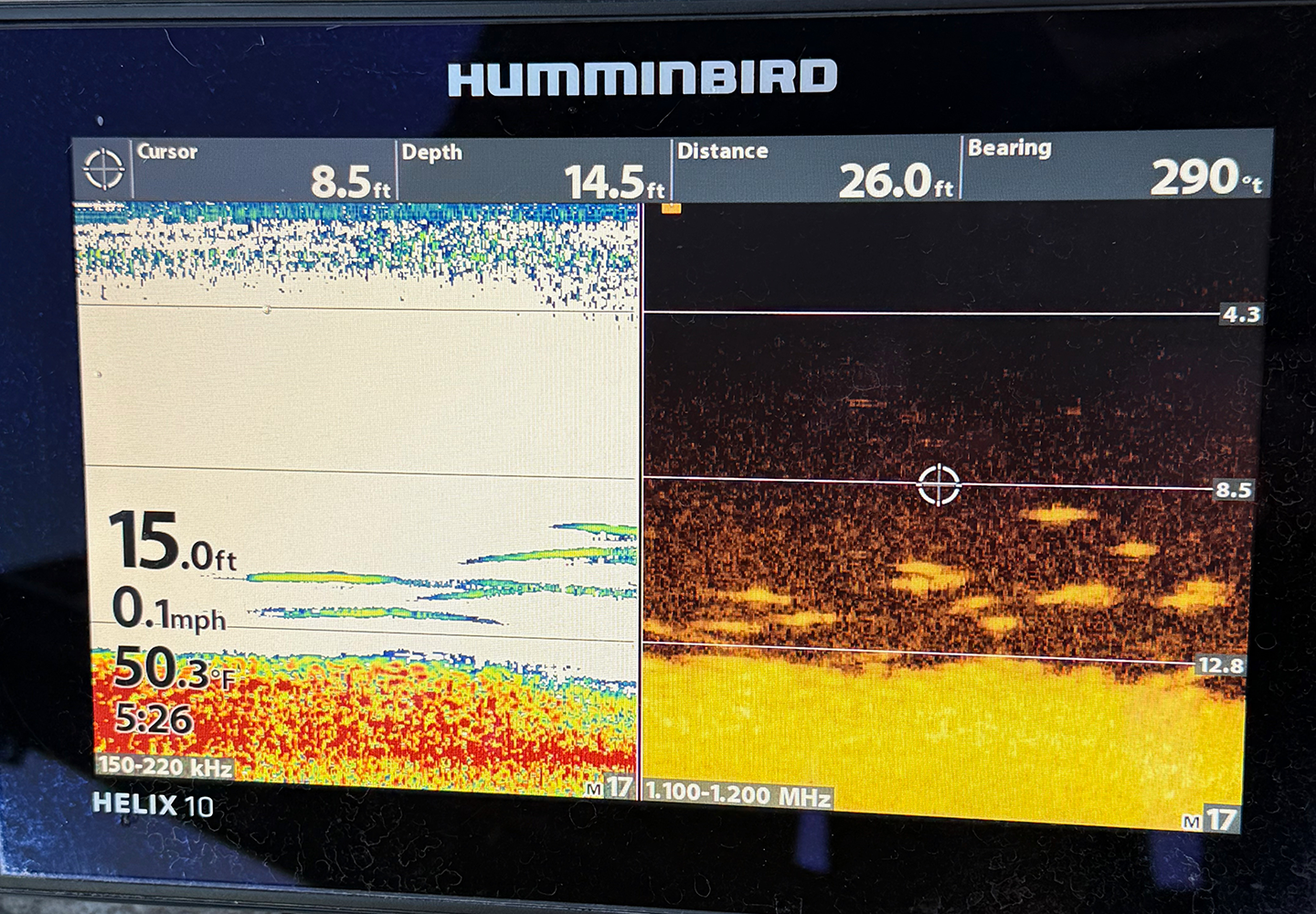 It didn’t take that long for the action to get started. She had several missed strikes and hooked the first fish but we had a tangle and didn’t get it to the boat. Thinking the fish might be bluegills, I had a 1/8-ounce jig tipped with a cut night crawler. The 1st fish caught on it was a crappie, and so was the 2nd one. There was a lull in the action, so Susan switched to a small fathead minnow. Soon, she caught a crappie too, and then another.
It didn’t take that long for the action to get started. She had several missed strikes and hooked the first fish but we had a tangle and didn’t get it to the boat. Thinking the fish might be bluegills, I had a 1/8-ounce jig tipped with a cut night crawler. The 1st fish caught on it was a crappie, and so was the 2nd one. There was a lull in the action, so Susan switched to a small fathead minnow. Soon, she caught a crappie too, and then another.
As an experiment, I switched lures, throwing a 1/16-ounce live bait jig tipped with a 2-inch Strike King paddle tail. Casting and retrieving with a sweep-fall-sweep-fall presentation was very effective. The crappies did seem to prefer the added action of the swimming tails. Had there been more time, we would try spinners too, but with the sun going down, it was time to call it a day.
You’re wondering, what would the Hippie Chick’s version of the story be? Well, here she is to let you in on her version of the adventure.
“Do you want to play it safe or go exploring?” Jeffrey asked. In my world, there is only one answer to that question, so off we went to the new lake we had never fished before.
As often happens on these excursions, there can be a lot of down time, but on this adventure I knew we had only three hours before sundown. Besides, the scenery was gorgeous…in the way that only a Northern Minnesota lake can provide. It reminded me of being up on the Gunflint Trail. It felt pristine, wild and remote. Jeffrey mentioned he half expected to see wildlife coming down to the water. I had already been thinking of the moose or bear that had to be close by!
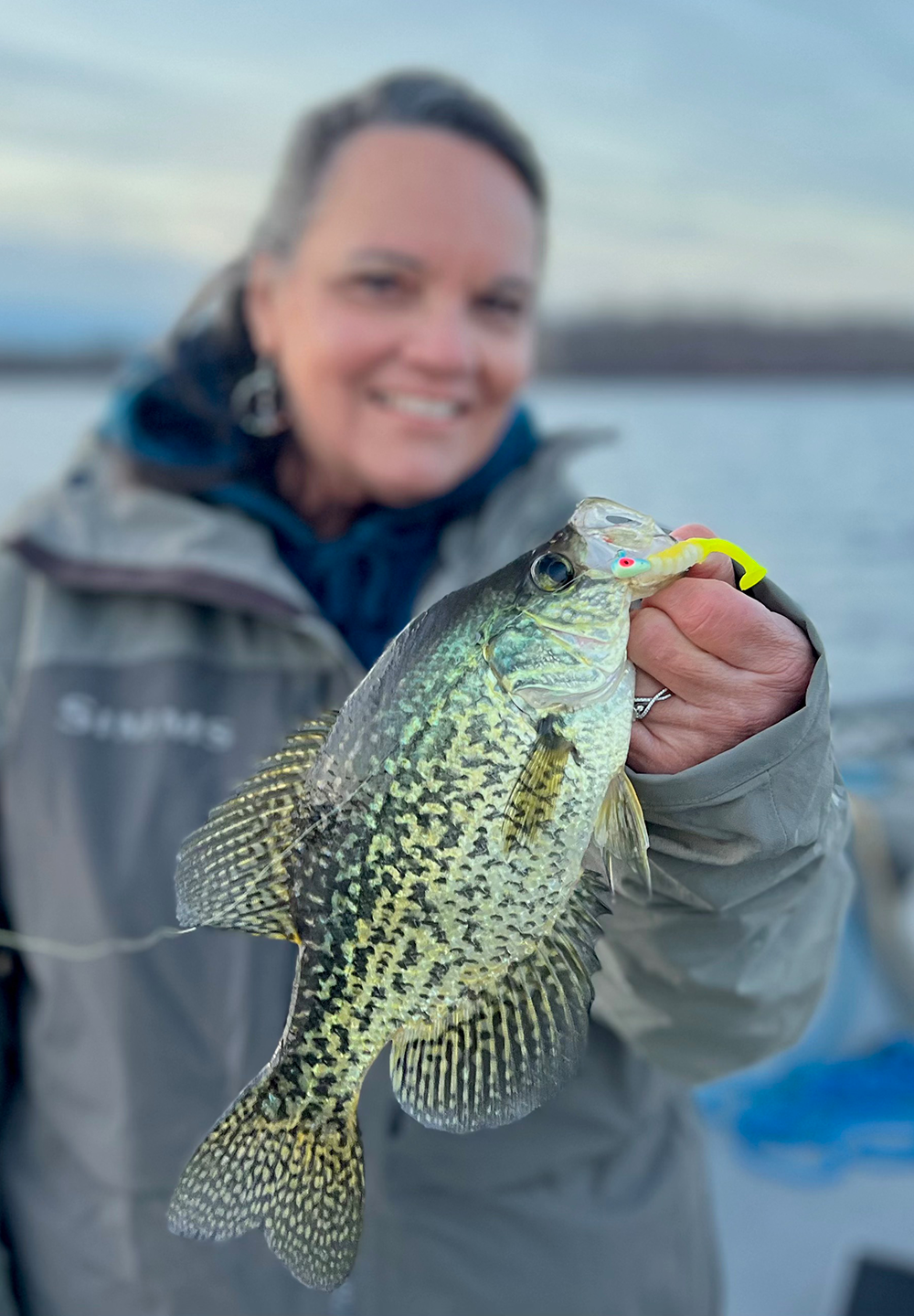 A couple of hours lapsed, I was enjoying the scenery. However, the wind was blowing pretty good and as the sun moved closer to the horizon, it felt colder. My fingers were starting to go numb. As I looked at my watch, I thought “no worries, we don’t have much time left before Jeffrey calls it.” So, I got the snack bag and moved down to sit closer to Jeffrey as I thought he might like to share in the honey crisp delight.
A couple of hours lapsed, I was enjoying the scenery. However, the wind was blowing pretty good and as the sun moved closer to the horizon, it felt colder. My fingers were starting to go numb. As I looked at my watch, I thought “no worries, we don’t have much time left before Jeffrey calls it.” So, I got the snack bag and moved down to sit closer to Jeffrey as I thought he might like to share in the honey crisp delight.
Chewing on my apple I happened to look over at the graph, and a school of fish had magically appeared! I jumped up and reclaimed my forward position in the boat and within minutes I was reeling in my first fish. Only, my reel wasn’t reeling and that turned into a big intervention for my guide. Whatever I did, he said it was the best he’d ever seen. Not exactly a proud moment for me, but now we were fishing again.
The fish were still hanging around and still hungry. That last half hour in the boat provided steady action. My favorite fish to catch was the last one, Jeffrey offered me his rod with the artificial bait. And as we trolled along I noticed a slight tug on my line. As usual, Jeffrey had been watching me; “pull up!” he said. I pulled up, and there was my fish. How does he always know? Anyway, the sun was going down, and our adventure ended with a beautiful waxing moon tucked between clouds of pink, and purple. Another beautiful ending to an adventure.”
Okay, we'll never know if those fish would have been active earlier or not. If we'd discovered that spot earlier in the trip, we might have caught a lot more fish. On the other hand, this might have been another episode of an evening bite that saves the day. Either way, our 3 hours turned out to be well spent. We learned some new territory, caught enough fish for a good meal, and got some nice photos.
No matter how we tell the story, it was such a nice afternoon that we’ve decided to do it again! So, today, after another meeting in Grand Rapids, we’re going to try something different again. For me, finding sunfish is high on the list, but we’ll see what the weather looks like and decide that later. Tune in tomorrow for an update, if you’re interested. ![]() — Jeff Sundin, The Early Bird Fishing Guide Office Cell Call or Text 218-245-9858 or Email on Facebook on X
— Jeff Sundin, The Early Bird Fishing Guide Office Cell Call or Text 218-245-9858 or Email on Facebook on X
 Wired2Fish "Understanding Transition Zones: Why They Are the Best Fish Structure for All Species"
Wired2Fish "Understanding Transition Zones: Why They Are the Best Fish Structure for All Species"
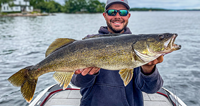 "When you watch fishing shows and major tournaments, or hear fishing chatter in the tackle shop, you’ve undoubtedly heard the words “transition zone.” It’s a term that’s thrown around a lot in the world of fishing, like everyone should know exactly what it means. When in reality, most anglers don’t understand what a transition zone really is. Even when I mention it to clients of mine that are longtime anglers, they still don’t understand it.
"When you watch fishing shows and major tournaments, or hear fishing chatter in the tackle shop, you’ve undoubtedly heard the words “transition zone.” It’s a term that’s thrown around a lot in the world of fishing, like everyone should know exactly what it means. When in reality, most anglers don’t understand what a transition zone really is. Even when I mention it to clients of mine that are longtime anglers, they still don’t understand it.
So what exactly is a transition zone? What makes them so special? Why do they hold so many fish? Why are we fishing this area as opposed to something else? These are the questions that I often get thrown at me whether I’m guiding, fishing with my buddies, or even around my local tackle shop. These are also the questions I’ll break down to help you better understand transition zones, as well as how to catch more fish in these hotspots.
What Is a Transition Zone? The word transition is defined as, “a period or phase in which such a change or shift ..." Read Full Article and Learn More >> Understanding Transition Zones: Why They Are the Best Fish Structure for All Species
 October 27, 2025 "Catch and Release, or Catch and Kill? Pros and Cons of Forward-Facing Sonar"
October 27, 2025 "Catch and Release, or Catch and Kill? Pros and Cons of Forward-Facing Sonar"
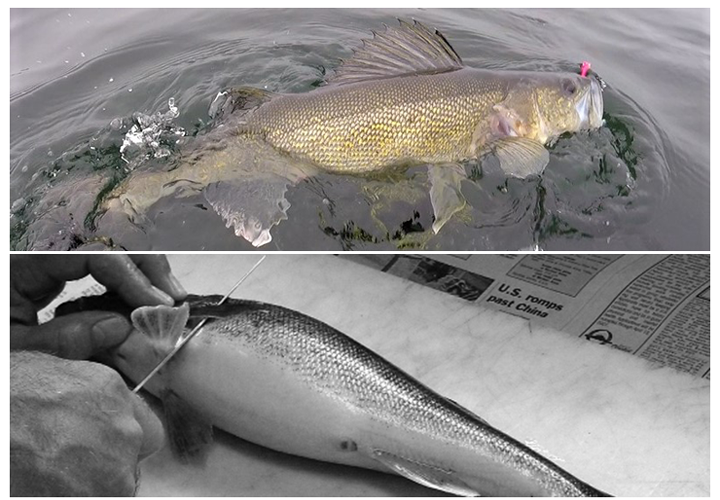 Last week, I wrote an account of the October 23, 2025, meeting of MN DNR Technology Workgroup. After posting the article, I shared a link to it on the Fishing Reports Minnesota facebook page.
Last week, I wrote an account of the October 23, 2025, meeting of MN DNR Technology Workgroup. After posting the article, I shared a link to it on the Fishing Reports Minnesota facebook page.
Have you been following any of those comments among anglers who are talking about forward facing sonar? If you have, you’ve likely noticed one of the main divisions between some FFS supporter’s vs some of its opponents. At the root of the split is an ethical question, is it better to harvest fish, or release them?
Supporters of forward-facing sonar tend to focus more, they tell us, on catch and release angling. According to them, using advanced technology to catch fish is perfectly fine because they release most, sometimes all the fish they catch. In their view, this is more ethical than harvesting fish, a practice that they associate with “old-timers” who haven’t caught up with modern practices. “Freezer fillers” is a term that gets thrown around a lot and they commonly view these folks with disdain.
Detractors of FFS, it appears, do tend to be more traditional in their views about harvesting fish. For many, bringing home fish to eat is important; they enjoy utilizing the resource in this way. One common view is that catching a limit of fish is the measure of whether their excursion was successful or not. Many view themselves as “traditionalists”, who prefer to rely on instinct or acquired skill to catch fish. FFS in their view, is a shortcut that allows anglers to catch fish without first learning some of those skills.
Who’s right and who’s wrong?
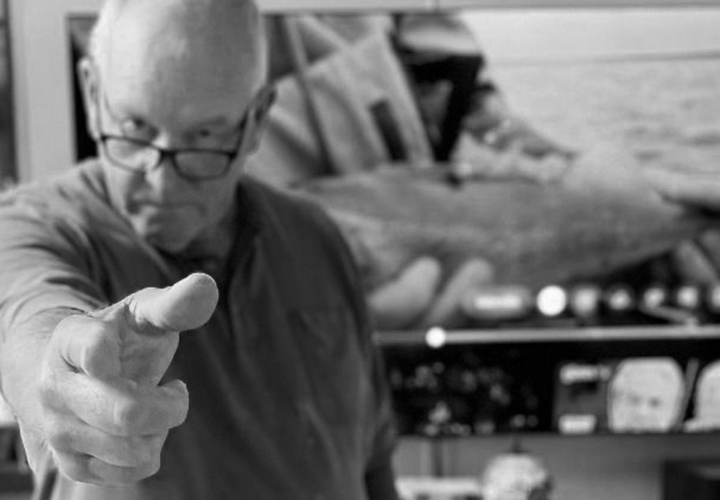 They both are, at least to some extent, and before we point the bony finger of indignation at either group, there are facts that must be taken into consideration.
They both are, at least to some extent, and before we point the bony finger of indignation at either group, there are facts that must be taken into consideration.
Harvesting fish to eat in and of itself is not bad, but I think we already agree that the harvest cannot be unlimited. Excessive harvest should be discouraged and it already is. That’s why there are possession limits on the fish we catch, fisheries authorities, we hope, have an idea of safe harvest levels and set these limits accordingly. If followed, anglers have a reasonable expectation of a sustainable level of harvest well into the future.
Releasing fish, most of us generally accept it as being a good thing, and in many cases, it is. The problem is that nobody ever knows how many released fish survive. Bret Amundson, last week, cited the report of a single walleye caught 4 years in a row by different anglers during an annual tournament. That accounting provides proof positive that releasing fish can be successful.
On the other hand, fish seen floating on the surface after improper handing provide evidence to the contrary, when not properly handled, fish mortality can lead to serious problems. I’ve seen it, and so have you, anglers who are woefully unskilled at safe hook removal release fish that have little chance of survival. Too often true, anglers target fish in deep water, many of which appear to be released healthy, but often die afterward.
This weekend, I watched some videos of high-level anglers using forward facing sonar to catch walleyes. In some of them, fish were caught in relatively shallow water, handled carefully and released, in my opinion, successfully. There were others though that really concerned me. Images of walleyes being targeted in deep, 30 plus feet of water, handled for extended periods of time and showing physical signs of barotrauma are common too. I was tempted to share one of them with you, but that would be inflammatory, and counterproductive, I think.
The idiom, “putting the cart before the horse” applies here I think. If our goal is to establish a meaningful policy about fishing technologies, there is one fact that must be considered. Catch and release fishing is not equal to zero harvest fishing. In the hands of so-called experts, forward facing sonar allows catch rates far in excess of those enjoyed by “average anglers”. If one angler harvests 5 fish, they are dead, and that’s the truth. If another angler releases 25 fish, and 20% of them die after handling, then that angler is also responsible for 5 dead fish.
My goal here is not to suggest that one way is better than another, that’s not my judgement to make. I simply think that no matter how we count them, we must count them. There are a certain number of fish that perish when we practice catch and release. If we don’t understand what the numbers are, we have no chance of providing reasonable guidance to anglers.
Wrapping this issue up in a neat package with a pretty bow in nearly impossible, I think. And I don’t believe “Forward-Facing Sonar”, today’s pressing issue, will be the final challenge either. Short of an outright ban on the use of almost all modern technology, we will be faced with a constant barrage of issues, some of which will be even scarier than the issues we face already.
My view, as it always has been, is that we should be putting all of our effort into education. Without teaching anglers the best practices, and insisting on the highest of ethical standards, we’ll simply be pushing the cart from behind, rather than pulling it from the front. Your thoughts? ![]() — Jeff Sundin, The Early Bird Fishing Guide Office Cell Call or Text 218-245-9858 or Email on Facebook on X
— Jeff Sundin, The Early Bird Fishing Guide Office Cell Call or Text 218-245-9858 or Email on Facebook on X
 October 23, 2025 "Grand Rapids Area Fishing Update"
October 23, 2025 "Grand Rapids Area Fishing Update"
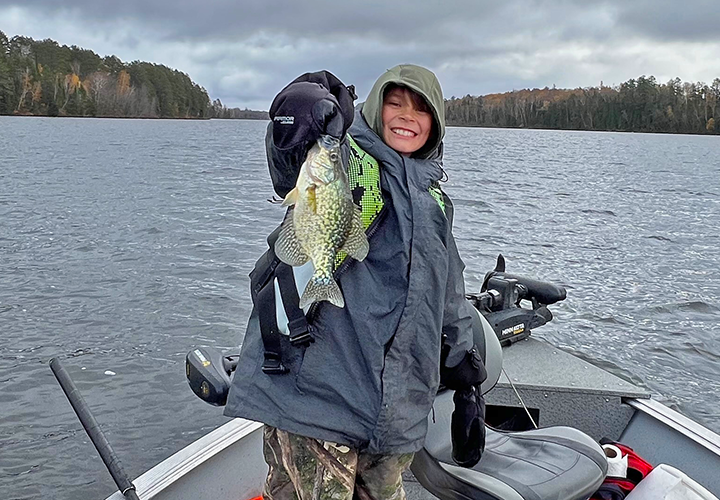 Despite having run my fishing schedule to its completion, I don’t feel like the fishing season is over yet. The problem is that I keep checking the weather forecast, hoping to see a “good” reason to issue a newsletter offering additional fishing dates. Frankly, I can’t see that golden opportunity in the predictions, so I haven’t.
Despite having run my fishing schedule to its completion, I don’t feel like the fishing season is over yet. The problem is that I keep checking the weather forecast, hoping to see a “good” reason to issue a newsletter offering additional fishing dates. Frankly, I can’t see that golden opportunity in the predictions, so I haven’t.
Even yesterday, I shared the weather forecast and offered my crew the “no-fault bailout clause”. If they’d chosen that option, they could have had a free pass to skip the finger-numbing wind, whitecaps and rain showers. “No, we want to get on the lake one more time, so let’s do it. We’d really like to get some pike, but whatever works best is what we’ll do, it’s up to you”, they advised.
I planned the excursion based on finding a small lake where we could avoid big waves and long boat rides. My choice, a 700-acre lake with a special regulation on northern pike. Here, all pike from 24 to 36 inches must be released, but anglers are allowed to harvest 3 fish up to 24 inches long. I like that regulation because it allows folks to harvest some slightly larger fish than allowed by the general northern zone 22-inch threshold. I like it too because on most trips, we catch a few of the larger fish in the protected slot size range.
Okay, that is a great plan when it works, but on Wednesday, I had to pivot. The pike we were seeking had evacuated the weedline. Fishing the edges of vegetation provided us with only 1 hammer handle. Going deeper, further down the breaklines, I could see fish holding in water depths of 17 to 20 feet deep. Trolling for fish in that depth is hit and miss, so I opted to fish for them using jigs tipped with plastic paddle tails. If they were pike on my screen, they were not interested in our jigging baits. I considered switching to live bait, using the medium sucker minnows I’d brought, but my sense was that I needed to find something to do. Based on body language, I feared that cold fingers, and short attention spans were going to detract from the effectiveness of Lindy Rigging. Instead, I decided to take a look at mid lake structure to check for panfish.
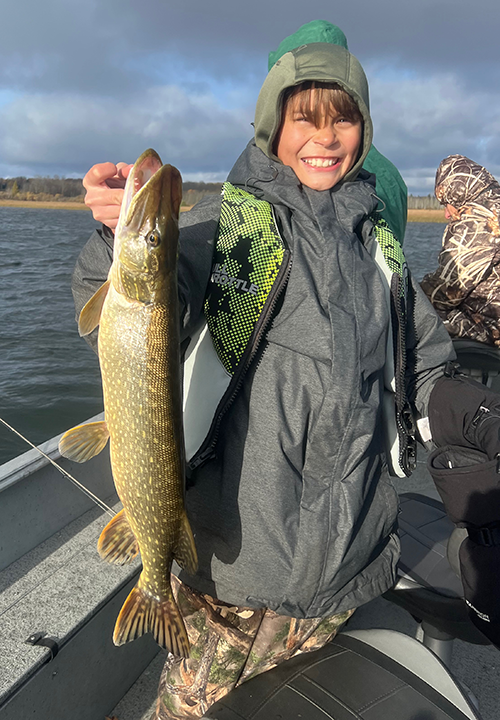 Crappies, located along the edges of the steep breaklines into the mid-lake basin were easy to spot. As it happened, they were easy to catch too and they provided the action boost we needed. From my point of view, catching the crappies was the perfect interlude, but I knew that getting back on track to catch pike had to move up on the priority list. So, with 20 crappies in the livewell, and a crew that was now chilled to their limits, I opted to take them for a car ride. Moving to another lake would provide time to warm up, and hopefully, give me a chance to locate more active pike.
Crappies, located along the edges of the steep breaklines into the mid-lake basin were easy to spot. As it happened, they were easy to catch too and they provided the action boost we needed. From my point of view, catching the crappies was the perfect interlude, but I knew that getting back on track to catch pike had to move up on the priority list. So, with 20 crappies in the livewell, and a crew that was now chilled to their limits, I opted to take them for a car ride. Moving to another lake would provide time to warm up, and hopefully, give me a chance to locate more active pike.
Long story short, that was a good move, sort of. The larger and deeper water of Trout Lake near Coleraine was warmer. At 54 degrees, pike were still active along the weed lines and the ¼ ounce jigs with 3-1/2 inch paddle tails were effective at triggering strikes. Fishing in water depths of 12 to 20 feet, catching pike was fairly easy, that’s the good news.
The problem, for me, is that most of those fish fell into the range of the protected 22 to 26 inch slot. So harvesting them, like my crew was hoping to do, didn’t pan out that well. We did manage to keep 3 fish under 22 inches but released a dozen or more that ranged from 22-1/2 up to the 25-1/2 inch fish you see pictured here.
All things considered, this was still a good move, but I’m sure everyone wished that we’d caught some of the 22-to-24-inch pike earlier, when they would have been legal to harvest.
I’ll be happy to provide more details for anybody who asks, but right now I’m up against the clock. The radio show starts in a few minutes, and then I’m headed out the door to Brainerd where I’ll attend the MN DNR Technology Workgroup meeting. If you have a thought to share, text me this morning, and I’ll be sure to mention it at the meeting. ![]() — Jeff Sundin, The Early Bird Fishing Guide Office Cell Call or Text 218-245-9858 or Email on Facebook on X
— Jeff Sundin, The Early Bird Fishing Guide Office Cell Call or Text 218-245-9858 or Email on Facebook on X
 Ely Area, Arrowhead Outdoors Fishing Report October 22, 2025
Ely Area, Arrowhead Outdoors Fishing Report October 22, 2025
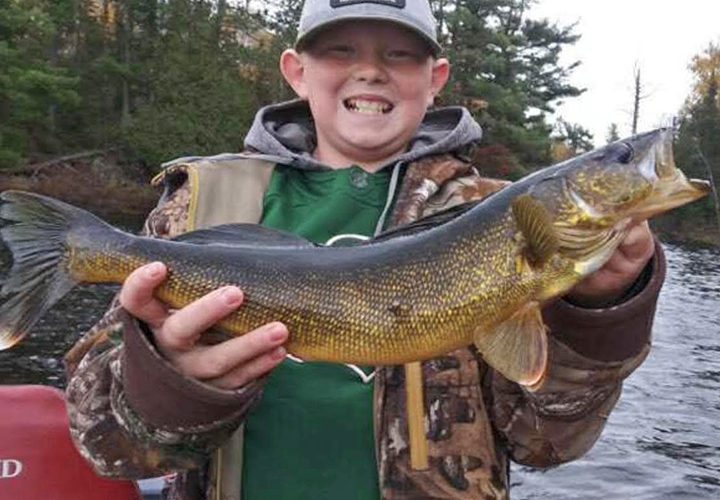 "Walleye - Fall walleye fishing continues to get better and better as water temperatures are now in the mid to low 50's and falling. Big minnows continue to be the way to go for the majority of anglers now.
"Walleye - Fall walleye fishing continues to get better and better as water temperatures are now in the mid to low 50's and falling. Big minnows continue to be the way to go for the majority of anglers now.
Anglers are finding walleyes anywhere from 6 to 35 feet of water now. Windy structure or windy shorelines have been the best areas to target walleyes. Key has been to find the schools of baitfish. Find the baitfish, find active, aggressive walleyes. Trolling crankbaits in these same depths has also been very effective for finding and catching quality walleyes.
Smallmouth Bass - Smallies have begun to drop in the water column as water temps continue to drop. Anglers are now finding smallies in 15 to 25 feet around sunken islands. Slow moving baits like a large sucker minnows, fished on a lindy rig or your favorite large soft plastic fished on a drop shot rig. Not all sunken islands are created equal so, you may have to fish a few before finding the one they are still schooled up on, but when you do you will know.
Pike - Large pike have begun to show up on shallow rocky pints, shallow rocky sunken islands and river mouths as whitefish and ciscos are nearing their spawn. Large minnow baits, large soft plastic baits or large sucker fished under a bobber often results in new personal best pike being caught.
Stream Trout - Rainbow trout fishing was unusually slow for this time of the year. Some rainbows were being caught very close to shore by shore anglers, but the best rainbow trout fishing came at 30 feet of water. Hanging night crawlers under a bobber or trolling a chunk of crawler on a spinner rig often produced bites." — Arrowhead Outdoors, 218-365-5358
 Wired2Fish "Why Do So Many Anglers Quit Fishing?"
Wired2Fish "Why Do So Many Anglers Quit Fishing?"
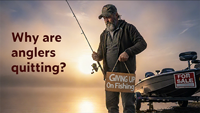 "I read a statistic recently from Southwick Associates — a research firm specializing in sportfishing — that less than half of all licensed anglers renew their fishing license each year. That figure hit me like a freight train.
"I read a statistic recently from Southwick Associates — a research firm specializing in sportfishing — that less than half of all licensed anglers renew their fishing license each year. That figure hit me like a freight train.
My first thought was, “How can this be?” Fishing is like a drug, almost an addiction for some. But looking past the obvious biases for my favorite pastime, it all sort of made sense. I’ve been fishing my entire life, spanning decades in countless places, but many people haven’t or aren’t able to experience that.
An American Sportfishing Association (ASA) study found that the reason people start fishing is for fun, relaxation, socialization, or outdoors experiences. When those initial reasons they tried fishing aren’t satisfied, or a different outdoor activity does satisfy their itch, fishing goes out the window. It’s not even that they dislike the act of fishing, according to the ASA study.
Here’s The Reason Why: Simply put, other outdoor activities are easier to ..." Read Full Article and Learn More >> Why Do So Many Anglers Quit Fishing?
 Lake of the Woods, LOW Tourism, October 21, 2025
Lake of the Woods, LOW Tourism, October 21, 2025
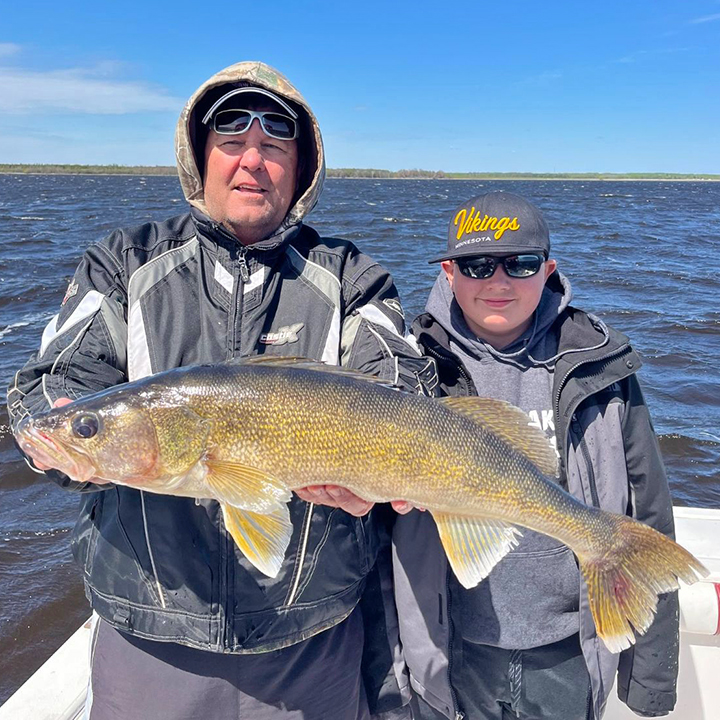 "Here we are with a very similar report to last week. On the south shore of Lake of the Woods, it's been another great week of walleye fishing on Big Traverse Bay. Strong numbers of walleyes are set up in traditional fall locations across the south shore of the lake. In front of Pine Island, Morris Point Gap, in front of Zippel Bay, Long Point over to Twin Islands. This is also setting up nicely for ice fishing!
"Here we are with a very similar report to last week. On the south shore of Lake of the Woods, it's been another great week of walleye fishing on Big Traverse Bay. Strong numbers of walleyes are set up in traditional fall locations across the south shore of the lake. In front of Pine Island, Morris Point Gap, in front of Zippel Bay, Long Point over to Twin Islands. This is also setting up nicely for ice fishing!
The bite is very good and will even get better as water temps decrease. From the Lake of the Woods Wave Buoys, the water temp last week was 55 degrees. It is down to 53 degrees this week.
Expect a mixed bag of walleyes, saugers, jumbo perch and an occasional crappie or pike in the mix. The best bite this week is in 17 to 25 feet of water. Vertical jigging with a frozen or live emerald shiner is definitely the goto presentation, however, some anglers are still trolling crankbaits with good success.
Hot jig colors this week were orange-chartreuse, gold-orange combos or solid gold, pink, and glow white. When hooking the minnow on a jig, place the hook of the jig through the mouth and out the gill of the minnow, pushing the minnow as far up towards the jig head as possible, and then hook the minnow about half or 2/3 of the way back on the minnow. In the stained waters, the walleyes aren't as picky and your hookups will increase.
On the Rainy River, emerald shiners are in the river but not in big numbers yet. There are decent numbers of walleyes with some good reports this week. A jig and frozen or live shiner along current breaks, deeper holes, and weed edges, while others were covering water trolling crankbaits. Normally, emerald shiners are the go to bait. Fall is when bait dealers net, freeze and package emerald shiners which are used all year long. Consequently, some live shiners are currently available.
Sturgeon anglers are reporting some nice fish, and in many cases, good numbers. A classic sturgeon rig with crawlers (optionally tipped with some shiners) has been effective. The sturgeon catch-and-release season is upon us and continues through April 23, 2026.
At the Northwest Angle,, walleye fishing continues to be excellent on both sides of the border. Again, a jig and minnow on points, over reefs, neck-down areas, and mud-to-rock transitions is catching good numbers of walleyes with saugers, jumbo perch, crappies, smallmouth bass and pike. Muskie anglers are reporting good activity with cooling water temps. Fall is one of the best times of the year to pursue trophy fish over that 50 inch mark in these parts.
With a mild weather forecast for this time of year, some great fall fishing is still available. Charter boats and guides are still available through October, or bring up your own boat. You don't have to travel far to find good numbers of walleyes this time of year." — Lake of the Woods Tourism, (800) 382-FISH
 October 17, 2025 "Anglers Head North For MEA Weekend"
October 17, 2025 "Anglers Head North For MEA Weekend"
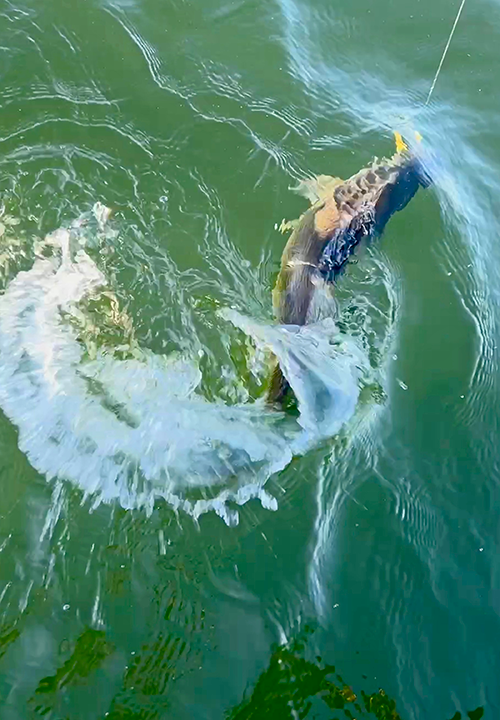 I wouldn’t call it a mass influx of traffic, but there are a number of folks heading toward north central Minnesota lakes this weekend. Some are taking advantage of schools closed for MEA, Minnesota’s last school holiday that occurs during the open water fishing season. Others are just trying to squeeze in a final weekend of fishing before wrapping it up for the year.
I wouldn’t call it a mass influx of traffic, but there are a number of folks heading toward north central Minnesota lakes this weekend. Some are taking advantage of schools closed for MEA, Minnesota’s last school holiday that occurs during the open water fishing season. Others are just trying to squeeze in a final weekend of fishing before wrapping it up for the year.
The weather forecast favors a good fishing weekend, daytime highs in the mid-50s, winds varying, but within manageable range and not much predicted rainfall. Water temperatures on most of the shallow water lakes in my region have dipped into the low 50s. Deeper water lakes hold on to their warmth longer, and some of them still have water temperatures in the 56 to 58 degrees range. The variations in temperatures explain, to a certain extent, the differing fishing patterns from one lake to another.
Walleyes, now feeding primarily on minnows and young of the year perch, can be located near the shorelines of all the most popular destinations. Lake Winnie, Leech Lake, Cass Lake and Lake Bemidji anglers are reporting reliable action. There are fish available in a wide variety of locations, but they are well fed, and choosy about feeing times. For me, the key to consistent action is to keep moving from one school of fish to another. It may take several stops to find them, but sooner or later, we land on a school of fish that is active at the moment.
For most anglers, jigs and minnows are the mainstay presentations. Folks have been asking me about minnow supplies, so I did a quick check with a few of the more reliable shops in the region. No matter where you shop, remember that this is the time of year when walleyes want a big meal. No matter if you buy fatheads, rainbows, gold shiners, or whatever, size is more important than minnow species. For me, minnows that touch the 4-inch mark are ideal. Slightly smaller, or larger sizes are okay if that’s all I can get.
Here in Grand Rapids, the West End Lucky 7 gas station has an amazingly reliable supply of good-sized minnows. I’ve been surprised at times when they’ve had large fatheads, golden shiners and others. 1000 Lakes Sports, if you shop after 8:00 AM is also a reliable source of better minnows. I’d shop there more often if they were open earlier, but that is what it is.
In the Deer River, Fred’s Bait and Winnie One Stop have had reliable supplies of “decent sized” fatheads. Not overly large by any means, but acceptable for most fishing situations. An alternative is their “river mix” which can vary from day-to-day but generally contains dace, rainbows, small creek chubs, and others.
In the Bemidji area, Northwoods Bait and Tackle has also had a reliable supply of “decent size” fatheads. Whether or not they have good alternative minnows was unclear as of Thursday, if I hear more about that, I’ll post an update later today.
Last week, a friend offered guidance about his favorite alternative minnows, small pike suckers. On Lake Winnie, Walleyes, in his opinion, showed a strong preference for the small, 3-to-4-inch size sucker minnows. Supplies vary from store to store, and he drove to Hackensack to pick up the ones he used. Wherever you shop for bait, it wouldn’t hurt to ask if they have any of the small pike suckers on hand.
Folks fishing near the Longville area enjoy what is probably the best scenario for live bait and fishing tackle in our region. Most will find good minnows at both Full Stinger Bait and at the Cenex Station, aka The One Stop. Whatever you can’t find at one store, will likely be available at the other.
Crappie anglers will find reliable action on most of the small lakes in the region. Classic fall patterns, featuring fish moving into open water, and mid-lake areas are in effect now. On a few of the lakes I’ve fished, crappies have been reluctant to leave the weed lines. If after checking a few open water spots, you don’t find crappies, then check out the weeds.
Ordinarily, I’d be joining all of you on the water this weekend. This year though, I had to turn down some fishing trips so that I could take advantage of an opportunity that may not ever come along again. So, I’ll be in dry dock today and tomorrow. After that, it looks like the weather will allow me to work a few extra dates next week and I’ll have updates about those, if and when I complete them.
If you head for the lake this weekend, or maybe if you’re here already, good luck out there. Be sure to let us know how you do, and check in here on Sunday morning for updates from your fellow anglers. ![]() — Jeff Sundin, The Early Bird Fishing Guide Office Cell Call or Text 218-245-9858 or Email on Facebook on X
— Jeff Sundin, The Early Bird Fishing Guide Office Cell Call or Text 218-245-9858 or Email on Facebook on X
 October 16, 2025 "Experimental Sand Lake Walleye Regulation Under Review"
October 16, 2025 "Experimental Sand Lake Walleye Regulation Under Review"
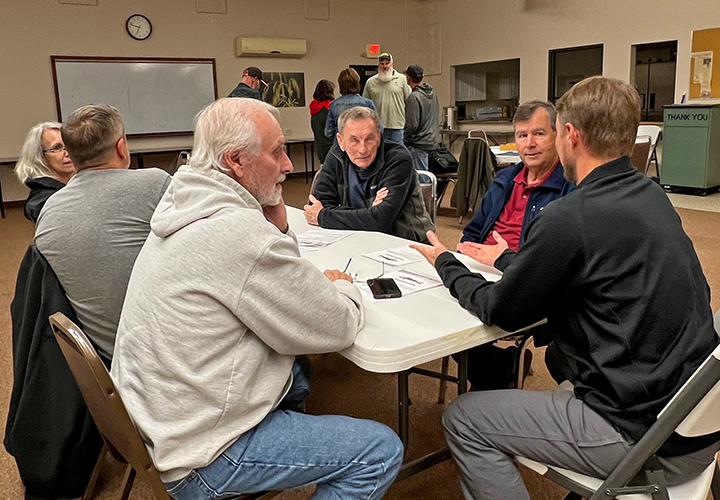 Grand Rapids area fisheries staff are recording positive results for Sand Lake walleye populations stemming from experimental regulation. The experimental regulation, established in 2016, placed a protected 17-to-26-inch slot on walleyes in Sand Lake. For almost 10 years, anglers have been required to release all walleyes between 17 and 26 inches. Now, with the 10-year experimental regulation period set to expire, the question is whether to extend the current regulation, drop it entirely, or modify it, and start a new 10-year experiment.
Grand Rapids area fisheries staff are recording positive results for Sand Lake walleye populations stemming from experimental regulation. The experimental regulation, established in 2016, placed a protected 17-to-26-inch slot on walleyes in Sand Lake. For almost 10 years, anglers have been required to release all walleyes between 17 and 26 inches. Now, with the 10-year experimental regulation period set to expire, the question is whether to extend the current regulation, drop it entirely, or modify it, and start a new 10-year experiment.
At a public meeting held last night at the Squaw Lake Community Center, area fisheries supervisor Brett Nelson and assistant area fisheries supervisor Doyle Haas fielded questions and offered guidance about the options.
In layman’s terms, the goals of any fishing regulation are to provide anglers with the opportunity to utilize “surplus” resources while preserving a lakes ability to produce adequate populations going forward. In my "ideal scenario", DNR fisheries staff would measure fish populations, set safe harvest levels and establish the most effective regulation for each lake individually. We all know that management option is not available to the over-worked, underfunded field staff.
In the real world, fisheries officials are forced to factor in numerous variables that include infrequent surveys, incomplete population estimates and widely varying angler opinions. Experimental regulations, as I understand, allow for more frequent testing and lead to more accurate information on which to base decisions. Those testing results were the focus of last night’s meeting.
In a conversation with me, assistant supervisor Haas advised; “Current test results show a wide variety of walleye ages, and sizes. There appears to be enough adult walleyes in the system to warrant a relaxation of the protected slot size range.” I can’t put words in his mouth, but my sense was that Haas is supportive of a revised, 20-to-24-inch protected slot.
From personal experience with other lakes in my region, the 20 to 24 protections do seem to be adequate. Anglers do enjoy the ability to harvest a wider variety of walleye sizes, but we still release a respectable number of fish between 20 and 24 inches.
In a survey form provided at the meeting, anglers were offered 3 choices.
- Keep the existing 17-to-26-inch experimental protected slot regulation
- Establish a new 20-to-24-inch experimental protected slot regulation
- Allow the current experimental regulation to expire and revert to the statewide, 6 walleye limit, with 1 walleye over 20 inches in possession
For what it’s worth, I completed the survey and weighed in as being supportive of a new experimental regulation with a 20-to-24-inch protected slot limit with 1 walleye over 24 inches in possession.
The online version of the angler survey expired on September 30th, but if you like, you can still participate. To weigh in with your opinion, call the MN DNR Grand Rapids Area Fisheries Office 218-328-8836. Comments may also be submitted by sending an email to grandrapids.fisheries@state.mn.us, or mailing NE Regional Headquarters, Area Fisheries, 1201 East Highway 2, Grand Rapids, MN 55744.
Before I wrap up, I want to personally commend Brett Nelson and Doyle Haas on the meeting itself. An informal open-house style questions and answers session replaced the typical scripted, power point type presentation. In my opinion, attendees were more engaged, information was more freely exchanged, and I came away with the sense that I’d both learned more, and shared more, valuable information. I hope the trend continues and spreads to other fisheries offices and events around the state. ![]() — Jeff Sundin, The Early Bird Fishing Guide Office Cell Call or Text 218-245-9858 or Email on Facebook on X
— Jeff Sundin, The Early Bird Fishing Guide Office Cell Call or Text 218-245-9858 or Email on Facebook on X
 Lake of the Woods, LOW Tourism, October 15, 2025
Lake of the Woods, LOW Tourism, October 15, 2025
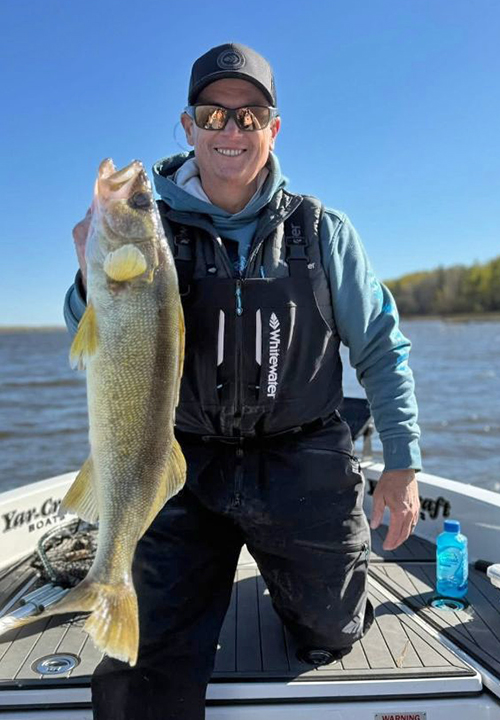 "Good numbers of walleyes are still being caught, and in numerous locations across the south shore of Lake of the Woods. More "fall-like" weather is starting to slowly bring the lake temps down which is a benefit to walleye anglers. The current water temp on the lake is 55 degrees. Expect walleyes of all different sizes, saugers, jumbo perch and an occasional crappie or pike in the mix.
"Good numbers of walleyes are still being caught, and in numerous locations across the south shore of Lake of the Woods. More "fall-like" weather is starting to slowly bring the lake temps down which is a benefit to walleye anglers. The current water temp on the lake is 55 degrees. Expect walleyes of all different sizes, saugers, jumbo perch and an occasional crappie or pike in the mix.
The best bite this week is in 17 to 27 feet of water. Vertical jigging with a frozen emerald shiner is definitely the goto presentation, however, some anglers are still trolling crankbaits with good success.
Hot jig colors this week were gold or gold combined with other bright colors such as orange, chartreuse, pink, and glow white. Lake of the Woods has stained water from the natural tannins in the water which keeps the walleyes and saugers biting throughout the day.
On the Rainy River, Emerald Shiners are in the river as are some nice walleyes. Anglers fishing the river, overall, pulled in nice numbers of fish this past weekend. Some were working a jig and frozen shiner along current breaks, deeper holes, and weed edges, while others were covering water trolling crankbaits.
Sturgeon fishing continues to be good. A classic sturgeon rig which is a 3 ounce flat no-roll sinker teamed up with an 18 inch heavy mono or fluorocarbon leader and a 3/0 circle hook loaded with crawlers (optionally tipped with a shiner) has been effective. The sturgeon catch-and-release season is upon us and continues through April 23, 2026.
At the Northwest Angle, walleye fishing continues to be consistently very good throughout the island region of Lake of the Woods. Both sides of the border are producing nice numbers of fish that are becoming increasingly active with dropping water temps. A jig and minnow on points, over reefs, neck-down areas, and mud-to-rock transitions is catching walleyes combined with saugers, jumbo perch, crappies, smallmouth bass and pike.
Fall crappie anglers continue to take advantage of the season finding nice slabs in various locations around points and in deeper water off of structure. Muskie activity continues to increase with cooling water temps. Most anglers are casting for fish, but fall is also a time to troll points and other areas of structure which often produces some nice muskies.
Charter boats and guides are still available through October, with a few still fishing into November." — Lake of the Woods Tourism, (800) 382-FISH
 News Release October 14, 2025 "News release: Minnesota DNR seeks public input on walleye slot limits on Sand Lake"
News Release October 14, 2025 "News release: Minnesota DNR seeks public input on walleye slot limits on Sand Lake"
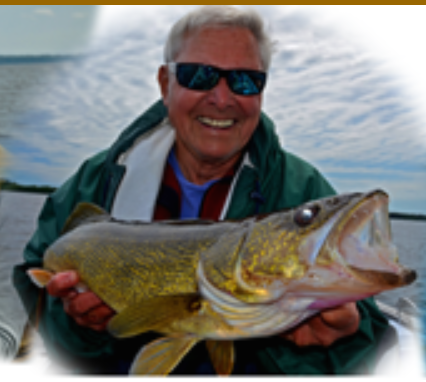 October 13, 2025: The Minnesota Department of Natural Resources is reviewing the current protected slot limit for walleye on Sand Lake, near Squaw Lake. This regulation may be extended, dropped or modified. Public input will be important to informing this decision.
October 13, 2025: The Minnesota Department of Natural Resources is reviewing the current protected slot limit for walleye on Sand Lake, near Squaw Lake. This regulation may be extended, dropped or modified. Public input will be important to informing this decision.
The DNR will be hosting a public meeting to discuss the slot limit and take public comments, from 6-8 p.m. Wednesday, Oct. 15, at the Squaw Lake Community Center, in Squaw Lake.
Comments may also be submitted by ..." Read Full Report >> October 14, 2025 "News release: Minnesota DNR seeks public input on walleye slot limits on Sand Lake"
 October 13, 2025 Walleyes For He, But Not For Me
October 13, 2025 Walleyes For He, But Not For Me
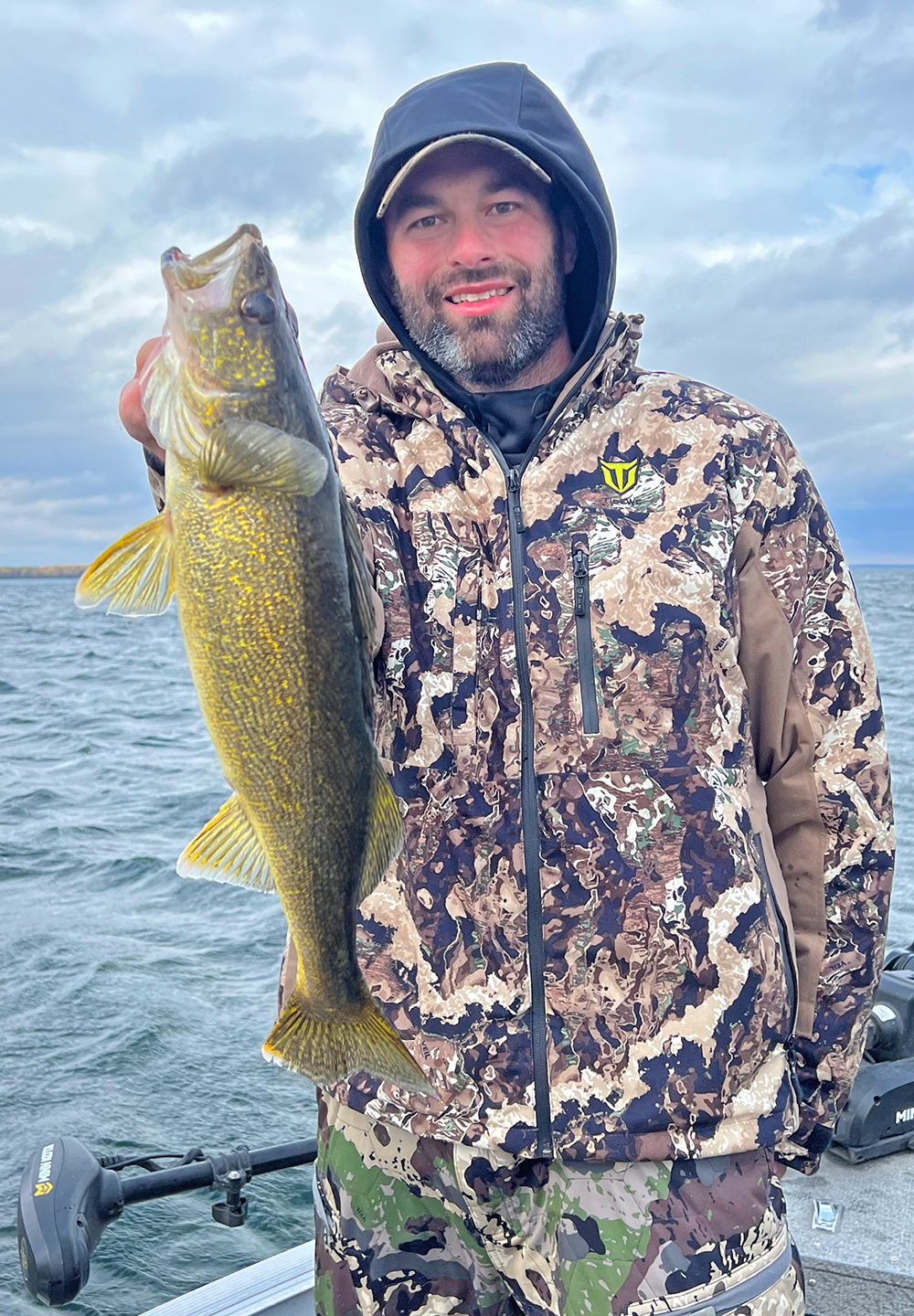 Expecting an excessive anount of wind, I offered my Sunday charter customers an opportunity to bail out. They are tougher than most though, and opted to “go for it”, rather than cancelling. They hoped that we’d figure out a relatively quiet place to catch some fish, walleyes if we were lucky. At our morning confab, we talked about Lake Winnibigoshish, but ruled it out because of the forecast, 40 MPH wind gusts. That decision would come back to haunt me later, but I didn’t know that at the time.
Expecting an excessive anount of wind, I offered my Sunday charter customers an opportunity to bail out. They are tougher than most though, and opted to “go for it”, rather than cancelling. They hoped that we’d figure out a relatively quiet place to catch some fish, walleyes if we were lucky. At our morning confab, we talked about Lake Winnibigoshish, but ruled it out because of the forecast, 40 MPH wind gusts. That decision would come back to haunt me later, but I didn’t know that at the time.
After mulling over some options, I decided to launch the boat on the south end of Round Lake, near Max Minnesota. I was certain that I’d entertain the boys by catching northern pike. I hoped that a handful of walleyes, perch or maybe some crappies would be brought topside along the way. At the landing, conditions were better than I expected. The surface water was calm; the temperature was 59 degrees and there were some sprinkles falling from the sky.
As we launched the boat, I said, “I’ll be pissed if the weather is better than forecast and I learn that we could have fished on Winnie.” That was because I knew that if catching walleyes was our only concern, fishing on Winnibigoshish was the place we should have been pursuing them. All things considered though, I was still optimistic that we’d find some fish and make a good day of fishing on Round.
After fishing a few spots, my prediction of catching northern pike had proven to be true. They were active, and we caught some at every stop. Walleyes had illuded capture so far, but at the 4th spot, we did begin catching some nice size perch. That gave me some confidence, my attention to detail intensified and I began coaching my crew about detecting walleye strikes vs pike or perch. Just then, my phone rang, “hey Jeffrey, if you’re looking for something to do, walleyes are snapping on the southwest side of Winnie; it’s the real deal,” my buddy said. I asked some questions, mostly about the fish-ability of the waves. “It’s windy, but it’s fish-able,” my friend advised.
“Okay boys, reel ‘em in, we’re going for a ride,” I said. As we loaded the boat and completed our clean up, pack up process I advised, “if the fish my buddy is catching quit biting by the time we get there, we’ll have to find some others, but at least we know that they’re biting.” And with that, off we went, in hot pursuit of some eating size, Lake Winnie Walleyes.
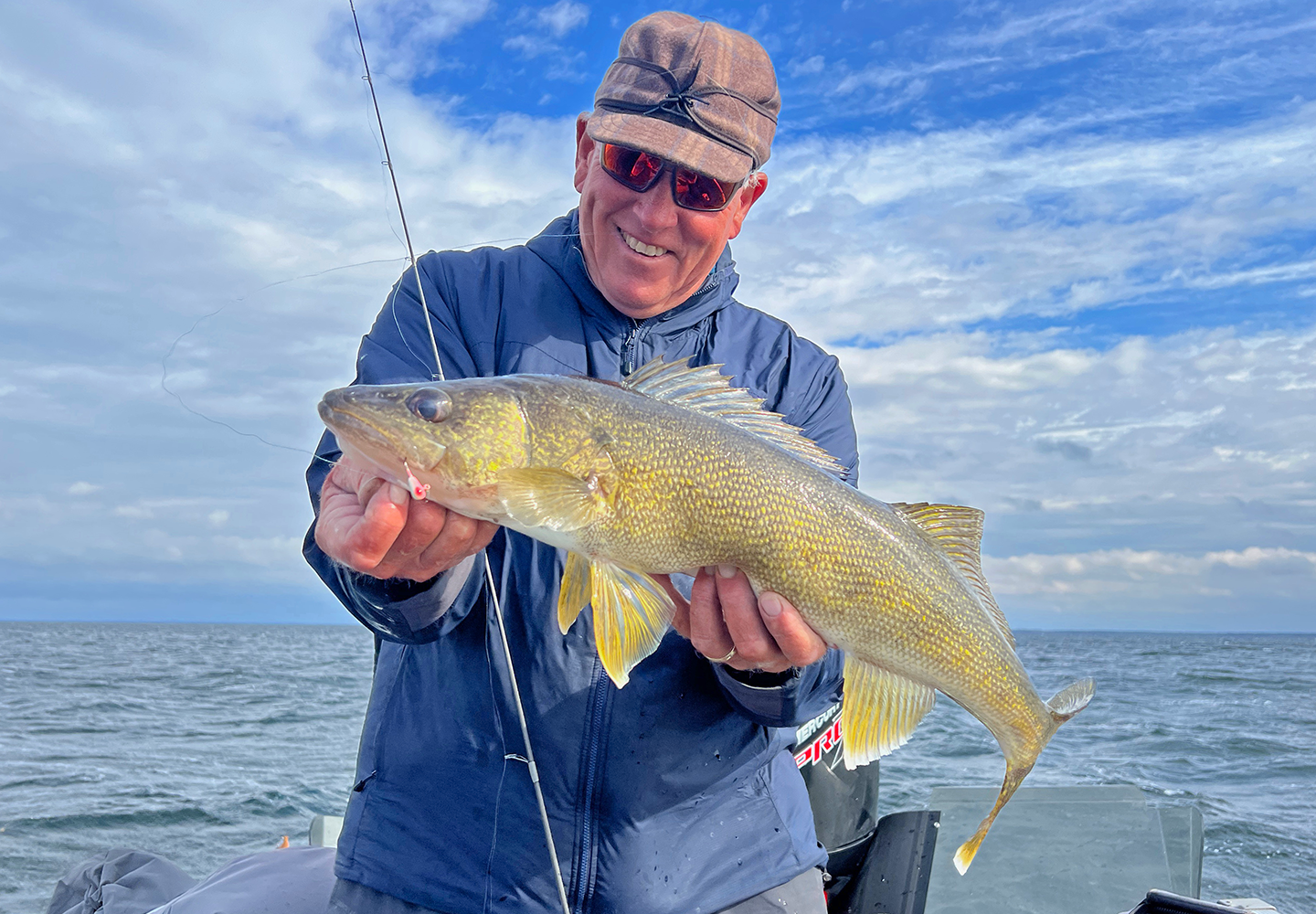 At the landing, water conditions were not too bad, there was a heavy chop on the water, but it would be manageable. Surface water was 56 degrees, and under a grey sky, our chances of success would be good, or least above average, I thought. That thinking was apparently correct because within minutes of dropping lines in the water, I caught and released this, a 26-inch walleye. Not long after that, Shane boated a 20-inch walleye too. Oh boy, this is gonna be good, we’re not going to have any problem catching some eaters, I thought.
At the landing, water conditions were not too bad, there was a heavy chop on the water, but it would be manageable. Surface water was 56 degrees, and under a grey sky, our chances of success would be good, or least above average, I thought. That thinking was apparently correct because within minutes of dropping lines in the water, I caught and released this, a 26-inch walleye. Not long after that, Shane boated a 20-inch walleye too. Oh boy, this is gonna be good, we’re not going to have any problem catching some eaters, I thought.
From then on, we had action alright; mostly provided by northern pike. The pecking order had changed, and now, pike were on the prowl, but walleyes were scarce as hens teeth. Spot-by-spot, our jisg and minnows were greeted by scissorbills as they fell into the water. Some of the pike were actually landed, but most of them snipped off our jigs before we even saw them.
Frustrated by the change, we motored from one end to the other along the lake’s calm side in search of eating sized walleyes. Along the way, we caught perch, and some more protected slot walleyes, but not a single “eater” was brought to the net.
There’s not a lot more I can say except for “live and learn”. Sometimes chasing someone else’s “hot bite” isn’t the best idea. If we’d been on Winnie from the start, we’d likely have gotten in on good action. If we’d stayed put on Round Lake, and fished my original game plan, we may also have found better action and improved our odds of harvesting some walleyes. I’ll never know, but if I could do it over, I’d do it differently next time.
Customers have occasionally heard me say, “all my life, I’ve wanted to be a bigtime pro guide in hot pursuit of little fish.” Catching and releasing large walleyes is fun, and luckily we did catch some of those, but they don't add to the larder. Pike are fun too, and they’re tasty, but not everybody agrees with me. So, on some days, like yesterday, catching pike is almost considered worse than catching nothing at all. Thankfully, perch, when they’re nice sized, are fun, tasty and comminly accepted. So, those were the fish that provided Shane with some protein for the trip home today.
Our experience on Winnie yesterday reinforced something I’ve been reporting recently. There are schools of fish everywhere, but there is so much food in the lake that the fish can feed at will. Intense, but short spurts of feeding activity, like the one my buddy enjoyed yesterday, are followed by long periods of inactivity. So, timing is everything, we have to find the right school of fish at the moment that they’re feeding.
On most days, I can travel to enough spots to find an alternative school of fish that’s active. When hampered by howling winds, creativity is diminished and finding that active school of fish becomes less likely. Like I said, if I could do it over, I’d do it differently, but that’s not an option. I’ll have to accept that yesterday, my final scheduled workday of the 2025 fishing season featured a highlight reel of photos, but not with a heavy creel of keepers.
Today I’m in dry dock, performing scheduled maintenance on the boat, and getting repairs to my vehicle. Throughout the week, I’ll be taking an opportunity to check out some lakes I haven’t fished before. Whatever I learn, you’ll be the first to know.
![]() — Jeff Sundin, The Early Bird Fishing Guide Office Cell Call or Text 218-245-9858 or Email on Facebook on X
— Jeff Sundin, The Early Bird Fishing Guide Office Cell Call or Text 218-245-9858 or Email on Facebook on X
 Wired2Fish "Passing It On: Why I Fish, and Why It Matters More Than Ever"
Wired2Fish "Passing It On: Why I Fish, and Why It Matters More Than Ever"
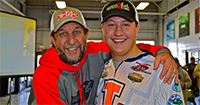 "Fishing is more than just a pastime; it’s its own world, its own culture. For those of us who live it, there’s truly nothing like it. Every angler has their own reasons for spending hours in pursuit of something they can’t see; the time spent on the water means something different to each of us.
"Fishing is more than just a pastime; it’s its own world, its own culture. For those of us who live it, there’s truly nothing like it. Every angler has their own reasons for spending hours in pursuit of something they can’t see; the time spent on the water means something different to each of us.
As fall settles in and another season winds down, I find myself reflecting because, with each passing year, my reasons for fishing change. What started as a competitive drive has evolved into something deeper. Today, fishing is my escape. It’s my way of staying grounded.
The Pull of Competition: When I first got serious about fishing, it was all about competition. I’d grown up fishing from the bank or from an old boat, but tournament fishing pulled me in with the challenge to ..." Read Full Article and Learn More >> Passing It On: Why I Fish, and Why It Matters More Than Ever
For Sale: 2020 Lund 2075 Pro Guide $42,500 Offered by Vern Valiant
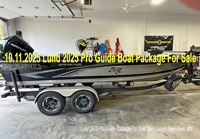 2020 Lund 2075 Pro Guide, 200 HP Mercury 4-Stroke Big Tiller
2020 Lund 2075 Pro Guide, 200 HP Mercury 4-Stroke Big Tiller
Anglers who frequently visit the Deer River, Lake Winnie region know of Vern Valiant, “Fishing with Vern” Guide Service. The nomadic fishing guide shows up fishing on Winnibigoshish, along with a bunch of other lakes in north central Minnesota region.
Valiant is meticulously mindful about the quality of the experience he offers fishing customers, friends and family. His top tier level of service extends not only to fishing, but also to his equipment, like his Lund 2025 Pro Guide package. Always well maintained, always kept clean and always parked inside in his heated garage, the rig is in excellent condition.
Frequently asked by boat shoppers, and likely one of your first questions is ..." See Full Report >> Lund 2025 Boat Package For Sale October 11, 2025
 October 12, 2025 Your Basic "Garden Variety" Crappie Fishing Report
October 12, 2025 Your Basic "Garden Variety" Crappie Fishing Report
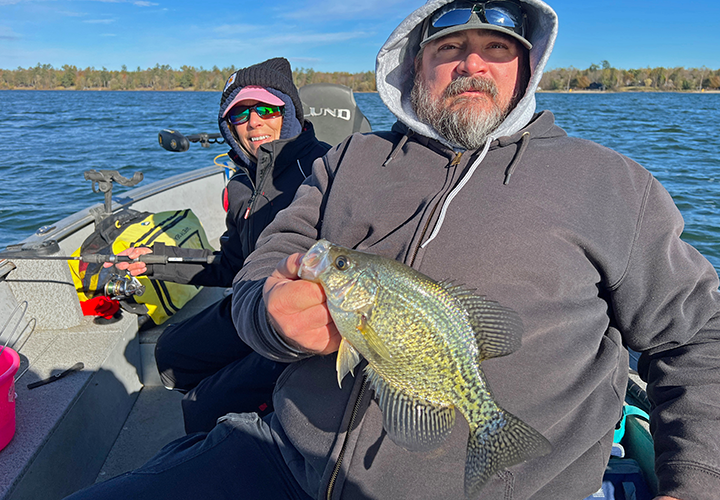 It’s mid-October, surface water temperatures are in the high 50s, or low 60s. If we want to fish for panfish and crappies, we need to go deep, right? The only place to find them is hovering over deep water, mid-lake basins, correct? The best answer to both questions is “not necessarily”.
It’s mid-October, surface water temperatures are in the high 50s, or low 60s. If we want to fish for panfish and crappies, we need to go deep, right? The only place to find them is hovering over deep water, mid-lake basins, correct? The best answer to both questions is “not necessarily”.
Anglers who fish for crappies in the fall may point to individual examples of a lake where deep water is the only game in town. Maybe it’s their favorite lake, or perhaps one that someone asks them specifically to fish. On those lakes, no matter how diligently they search, crappies cannot be found in shallow water. If that’s the case, okay, the premise is accepted, fish where you must, and catch the number of fish you plan to harvest and then move on. But understand, harvesting your legal limit is fine, it's just that catch and release fishing is not a viable option on these lakes; it’s just not.
You may be saying “Jeff, catching crappies is fun and I want to catch and release as many as possible. I don’t even want to harvest fish; I just want to catch and release as many as possible.”
Okay, if that’s the case, then select lakes that don’t have deep water. If a lake doesn’t have a “deep, mid-lake basin” then we can’t be tempted to go deep, right? If the deepest water in a lake doesn’t go below 20 feet or so, then every fish in it, is a “shallow fish”. Catching and releasing, carefully of course, is a much better option here, than it would be on the lake with a deep-water hole.
For me, locating lakes that feature shallow water, have attractive weed beds and are home to decent size panfish has been a 10-year project. Depending on which lake I choose, rewards for my efforts vary, I don’t always find a “good one”. My rule of thumb is that for every 3 lakes I try, 1 will be a dud, 1 will be “okay” and 1 will be a gem.
When I found a gem, like lake I, Diane and Ryan Eberhard fished yesterday, I am protective. Typically, 2 or 3 trips per season is my self-imposed limit. Because of that, I find myself having to re-locate fish every time I visit them, and that was the case yesterday. In shallow lakes, especially ones that have similar weed growth around the entire shoreline, fish are nomadic. For me, crappies are almost always someplace different than they were the last time I visited, and they were again yesterday.
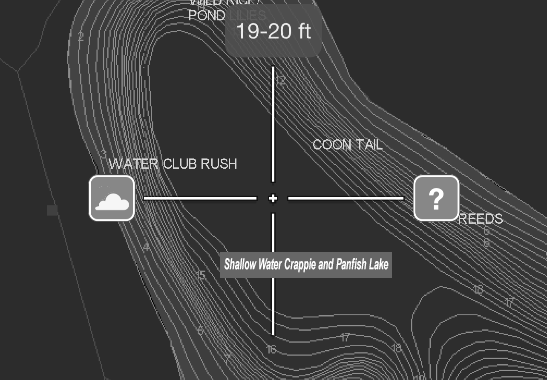 In my past reports, you’ve likely seen references to the power of positive thinking. Whether I call it the “Snyder Effect”, the “Rainbow Fish Meditation” or something else, it means the same thing; tapping into your instincts to locate and catch fish. Yesterday, I did that, except instead of tapping into my instincts, I tapped into Diane’s.
In my past reports, you’ve likely seen references to the power of positive thinking. Whether I call it the “Snyder Effect”, the “Rainbow Fish Meditation” or something else, it means the same thing; tapping into your instincts to locate and catch fish. Yesterday, I did that, except instead of tapping into my instincts, I tapped into Diane’s.
For a few hours, our search for crappies was frustrating. I was finding some, but they were in small, flighty packs of 3 of 4 fish and when we’d catch one, the rest of the pack would disappear. I kept saying that the fish always make me find them again, and that they’re seldom in the same spot twice. That’s when Diane pointed at the windy side of the lake and asked, “what about that shoreline over there?”
“Is that what your instinct is telling you, I asked?” She didn’t want to own it, but I accepted the guidance, motored over to the suggested area and began trolling the weed edges. Yes, you guessed it, there they were, and despite fighting the whitecaps, we caught a good number of nice crappies, and even nicer sunfish.
The presentations were all over the map. We found the fish by trolling spinners tipped with minnows and ½ night crawlers. When we pinned down some crappies, we spot-locked the boat and casted jigs for them. And when the fish were spread out horizontally along the weed lines, we drifted and fished with jigs and minnows. Bobbers were used for a time too, but in the heavy seas, they were not very productive. For us, spinners was the easiest way to cope with the whitecaps, and that’s how we finished out the day.
The accompanying image of my graph tells the story of where, how deep and the temperature of our preferred fishing spot. At 60 degrees, the water temperature was a recipe for active fish and made trolling a good option. The weeds, a mix of cabbage, coontail and other pondweeds made the spinners a good choice as well. They were a little too thick for easy jig and minnow fishing, but not sot dense that they fouled our spinners.
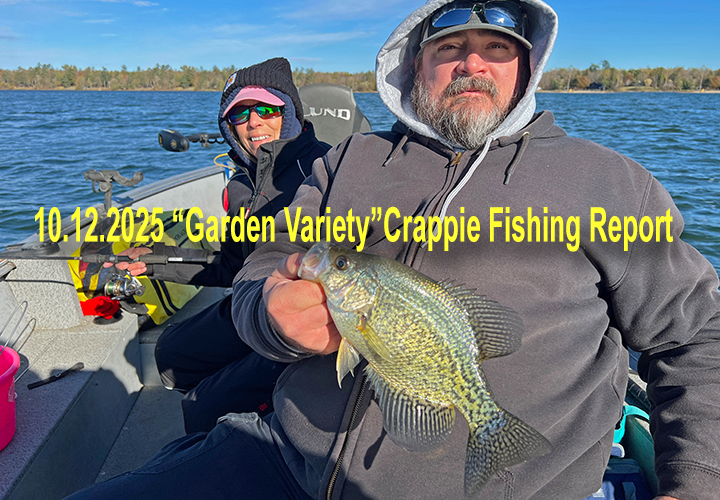 Besides our target species, we caught a lot of small bass, small pike, and a few small walleyes too. Because of their small size, none of those were harvested, but they did help keep us busy while we searched for panfish.
Besides our target species, we caught a lot of small bass, small pike, and a few small walleyes too. Because of their small size, none of those were harvested, but they did help keep us busy while we searched for panfish.
If you think that finding lakes like these is hard, think again, it’s not. I use the MN DNR Recreation Compass’ interactive map. First, I select a region that I want to target, for example, Bemidji. I click on every lake in the area and take a quick look at the lake’s maximum depth. If the depth falls within my parameters, then I check out the fisheries lake survey. If the fisheries survey shows the presence of crappies, or any other species I’m interested in, then I drill deeper. The aquatic plants survey tells me if the lake offers the type of vegetation I like to fish for a given species. If it all adds up, then I’ll add it to my list and try to schedule a time to test it out.
Like I said, they don’t always work out and that’s because the fisheries surveys are seldom up to date. Unless the lake has been tested within the past couple of seasons, they may not provide current information. Still, even an outdated fisheries survey tells me if the lake has a history of producing fish I’m searching for. The only way to know for sure, is to go and try a lake for myself.
After today, my final “scheduled” trip of the season, my “go and try it out” season will begin. Depending on the weather, I may or may not have a few more guided trips. Either way, I will certainly have a report about today, along with more fishing reports about where we go what we do after today. So, I hope you’ll stay tuned for a while, it should be an interesting time. ![]() — Jeff Sundin, The Early Bird Fishing Guide Office Cell Call or Text 218-245-9858 or Email on Facebook on X
— Jeff Sundin, The Early Bird Fishing Guide Office Cell Call or Text 218-245-9858 or Email on Facebook on X
 October 11, 2025 "Lake Winnie Fishing Report"
October 11, 2025 "Lake Winnie Fishing Report"
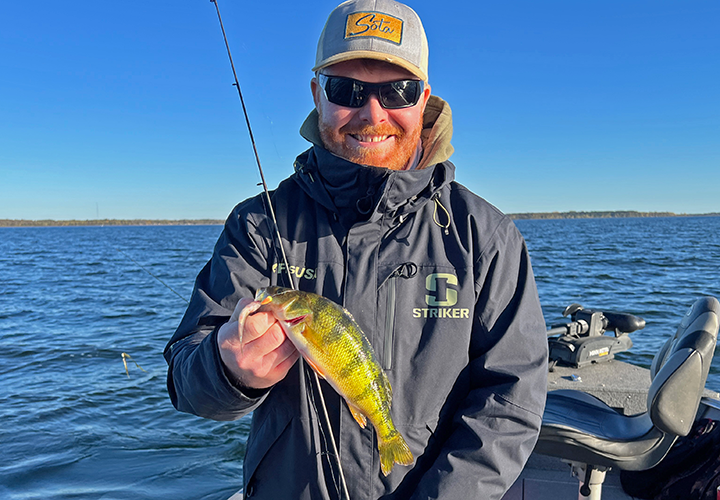 Lake Winnie was good to most anglers fishing there on Friday. I know several guides, along with friends who were visiting, that were on the lake. Walleye limits came easily, and they came from several regions around the lake. The west shoreline, north shoreline, Stony Point, Raven’s Point and Tamarack Bay were mentioned specifically. My guess is that other areas were productive too but not visited by folks that I know.
Lake Winnie was good to most anglers fishing there on Friday. I know several guides, along with friends who were visiting, that were on the lake. Walleye limits came easily, and they came from several regions around the lake. The west shoreline, north shoreline, Stony Point, Raven’s Point and Tamarack Bay were mentioned specifically. My guess is that other areas were productive too but not visited by folks that I know.
Surface water temperatures ranged between 57 and 59 degrees. I did see one 60 degrees reading, but that was an outlier. Averaging at about 58 degrees, this temperature range is as good as it gets, in my opinion. Now the question is, how long will the “peak” of fall walleye action continue?
Key fishing depths around the lake varied by spot, and we caught walleyes in water as shallow as 3 feet, but also as deep as 12 feet. For many, 8 to 10 feet seemed to be a solid, productive target range. The shallow water action was encouraged by a steady chop on the water that lasted through the morning, and into mid-afternoon.
Increasing water clarity is becoming an issue for consistency. At about 3:00 PM, the wind stopped, and the surface water calmed. That was not good for business, I, along with most of my friends, began struggling to catch fish afterward. As the water clears even more, finding breezy, but workable spots will be required. When it’s calm, finding weeds will help keep fishing action alive too.
Speaking of weeds, we found a patch of eelgrass yesterday and it held a nice school of perch. Located in about 5 to 6 feet of water, we were surprised that the fishing held steady as long as it did. That said, if we wandered more than a few yards away from the weed patch, the action stopped. So, if you run across a school of perch and want to target them. Spot-locking, or anchoring will be a good idea. For us, casting 1/8-ounce jigs tipped with minnows was reliable. I positioned the boat within reach of the eelgrass, and Rob and Bob enjoyed catching the fish by casting and retrieving using a hop-drop-hop-drop retrieve.
With the wind changing direction today, we’ll likely be looking for fish in different areas than we did yesterday. I think that will be fine, but there may be moments of uncertainty. If you encounter slow action, keep moving. It appears that different schools of fish are feeding at different times. So, if the fish aren’t biting where you are, even if you’re seeing lots of them on your electronics, make a move. Sooner or later, you will land on a school of fish that are feeding and when you do, the action will be good.
Key presenation? Jigs and minnows are a solid first choice, That said, folks are still catching fish using lindy rigs and large minnows, and spinners remain effective, especailly when searching for fish. Be creative, and keep changing it up when you're struggling to fish good action.
Like I pondered before, the question is how long with the action last? That depends on the weather, if water temperatures hold steady for a while, we might get another week, maybe even more before the action fades. I’ll let know as developments unfold. ![]() — Jeff Sundin, The Early Bird Fishing Guide Office Cell Call or Text 218-245-9858 or Email on Facebook on X
— Jeff Sundin, The Early Bird Fishing Guide Office Cell Call or Text 218-245-9858 or Email on Facebook on X
 October 10, 2025 "Better Late Than Never"
October 10, 2025 "Better Late Than Never"
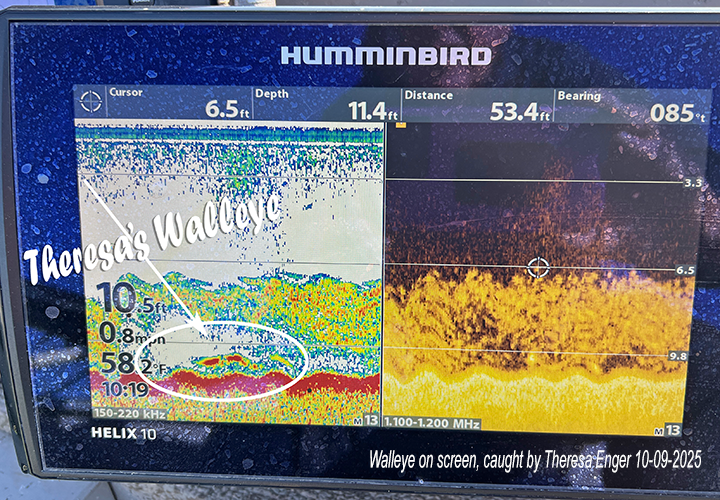 “Theresa, look, see that one on the screen, just below that cloud of baitfish? Look how there’s a clearing around the fish, the baitfish are scared because it’s feeding, this one’s gonna bite,” I said. “I’ve got him on right now, Theresa replied, he’s on my line right now!”
“Theresa, look, see that one on the screen, just below that cloud of baitfish? Look how there’s a clearing around the fish, the baitfish are scared because it’s feeding, this one’s gonna bite,” I said. “I’ve got him on right now, Theresa replied, he’s on my line right now!”
That was exiting, it’s not every day that you’re trolling spinners, in October, and catching the fish as they appear on the screen; but it did happen for Thersa Enger several times on Thursday.
What else was exciting is that despite the cool water temperatures, there was a summer-like, mixed bag, weedline bite going on. As the image below reveals, Thersa caught crappies, sunfish, walleyes, bass, perch and northern pike. Some fish were better than others, the walleyes weren’t large, neither were the perch, but the sunfish and crappies were nice ones. There were some large bass released too, and a lot of pike that we didn’t harvest either. For a taste test, we did hold onto a 27-inch pike, and one small bass; they’ll be tasty using the coconut pike delight recipe.
That all adds up to what sounds like a delightful trip, and it was. The only problem is that it happened at the end of the day, after a rather frustrating search. Fish of all species that I’d been catching throughout the past week had disappeared from where they had been. Fall patterns and presentations had for the most part fallen apart. It wasn’t until we hit the weedline and started trolling spinners that the action started.
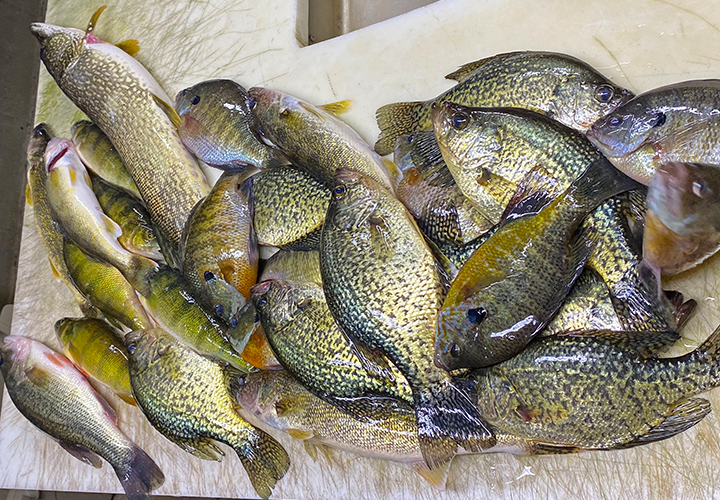 Many of those fish, the crappies in particular, were the same fish that I reported about catching on Tuesday. At the time, they were located over deep water and suspended just below the surface. What the move back into the weeds tells me is that the food supply is so great there that the fish are reluctant to leave. The cold snap that occurred earlier this week forced them out into open water, but only temporarily.
Many of those fish, the crappies in particular, were the same fish that I reported about catching on Tuesday. At the time, they were located over deep water and suspended just below the surface. What the move back into the weeds tells me is that the food supply is so great there that the fish are reluctant to leave. The cold snap that occurred earlier this week forced them out into open water, but only temporarily.
One tidbit of good news is that most fish are seemingly in a biting mood. Whenever we spotted fish on the graph yesterday, somebody, mostly Theresa, caught a fish. Scattered groups of crappies and panfish appeared at random intervals along the weed lines. They were segregated, and appeared to be grouped by weed types, crappies were also located further outside the weed edges, while sunfish heled tighter to the cover. The walleyes, like the one you see on the screen of the graph, were traveling solo, singles were the rule, not the exception.
Luckily for me, I thought of the possibility yesterday, albeit a little bit late in the day. And the takeaway for you, I hope, is that fishing patterns are in a state of flux. Some days, traditional fall feeding patterns and presentations work great. Other days, summer-like patterns are better, and it’s a good idea to check both on every outing.
If Winnie walleyes are on your agenda this weekend, the news is mixed. It’s easier to find fish than it is to catch them. Yesterday, we started there and were disappointed with the spots we tried. Wind was a problem for me; the big waves were not a good match for my crew. That’s why I wound up moving to a smaller lake.
After we moved though, I was in contact with friends on the lake and after some searching, they did find and catch good numbers of walleyes. Fishing shoreline breaks in 8 to 10 feet of water was the best and fishing with jigs and minnows was the preferred presentation. They tried and ruled out several spots before finding the right school of fish. I think that’s the trick, no matter how many fish you see on your graph, leave the area if they won’t bite right away. When you find the right school of fish, you’ll know it, they will be active immediately, you won’t be kept in suspense.
Okay, I’m heading into the final weekend of scheduled trips and today, I think we’ll be fishing walleyes, but I can’t say for sure. I’ll fill you in tomorrow. ![]() — Jeff Sundin, The Early Bird Fishing Guide Office Cell Call or Text 218-245-9858 or Email on Facebook on X
— Jeff Sundin, The Early Bird Fishing Guide Office Cell Call or Text 218-245-9858 or Email on Facebook on X
 Brainerd MN Area Fishing Report October 10, 2025
Brainerd MN Area Fishing Report October 10, 2025
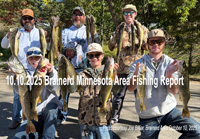 "The minnow bite in the brainerd lakes region is picking up. The last couple weeks walleyes have been caught on suckers, fat heads, shinners, creek chubs, and red tails. So far the best minnows have been chubs or red tails.
"The minnow bite in the brainerd lakes region is picking up. The last couple weeks walleyes have been caught on suckers, fat heads, shinners, creek chubs, and red tails. So far the best minnows have been chubs or red tails.
Pictching jigs in 12 to 8 feet of water on sand flats, or live bait rigging in 15 to 20 feet of water, depending on the lake. Rocks have been holding fish, but most of my fish have come from weed edges.
Water temps will be dropping quicker this week with the overnight lows dropping more consistently so look for the bite to pick up. Bite windows have been relatively short but when the fish get going be ready because the bite may only last for 30 to 60 minutes. But when the bite window is open it can be very good.
If you’re Lindy rigging it the area using a red hook has been best. Good luck and tight lines!" — Joe Billiar, Crooked Hat Guide Service • 507-469-2714
 October 9, 2025 "6 out of 12 Ain't Bad!"
October 9, 2025 "6 out of 12 Ain't Bad!"
 On Wednesday I got a text from a friend. “Way more 16-to-18-inch walleye in Winnie than I thought. Last 2 nights, I had very good fishing, with half of the fish perfect keepers,” it said. Fishing at night, it would seem, is the reason that the mix of fish sizes was “better than average” when compared to recent creel reports from anglers.
On Wednesday I got a text from a friend. “Way more 16-to-18-inch walleye in Winnie than I thought. Last 2 nights, I had very good fishing, with half of the fish perfect keepers,” it said. Fishing at night, it would seem, is the reason that the mix of fish sizes was “better than average” when compared to recent creel reports from anglers.
Wait a minute though, in my own report yesterday morning, I wrote, “By midafternoon, we’d sorted out 6 nice walleyes, 15 to 17-1/2 inches for Ken. And for me, 6 smaller fish from 14 to 14-1/2 inches would be utilized for a fish fry.” That was the result of fish at midday, under a bright sky. Again, on Wednesday, during the daytime, my crew Carl, Jay and Curt enjoyed reaping the benefits of a similar mix of fish sizes. I suppose we caught 18 walleyes, and 4 of them were in the protected, 18-to-23-inch slot. The rest of the 14 fish we kept consisted of 8 fish in the 15 to 17-1/2-inch range. The remaining 6 fish registered in at 14 to 14-1/2 inches long.
So, you’re asking, what is the reason why the mix of fish sizes has improved? I think it’s probably because the fall bite is on, and more fish are active now. Added to that is that more fish are occupying less territory too. As fish move away from mid-lake structures and turn up along the shorelines, the odds of encountering them increase. It’s not that anybody is fishing better, or even finding better spots, it’s just a better time to fish.
How long the fall bite will last is an open question. As of yesterday, October 8, 2025, surface temperatures on Lake Winnibigosh ranged between 59 and 61 degrees depending on where we stopped. For me, the “ideal range” for fall walleyes starts where we are now and lingers on until temps fall below about 54 degrees, give or take. That assessment is subjective; there are lakes and rivers that will defy my preferences.
Time of day will make a difference too, as water gets colder, fishing the crepuscular periods becomes increasingly important. So, as always, we could salvage a slow day on the lake by staying until the “evening bite” activates a feeding movement.
Alright, this is one of those days when I have a lot more to say, but no more time to say it. I’ve gotta run and pick up my customers for this, the 1st of 4 days remaining in my scheduled list of charters. I’ve been writing, recently, that I might consider adding a few extra dates after this weekend. So, if you’re interested, let me know. ![]() — Jeff Sundin, The Early Bird Fishing Guide Office Cell Call or Text 218-245-9858 or Email on Facebook on X
— Jeff Sundin, The Early Bird Fishing Guide Office Cell Call or Text 218-245-9858 or Email on Facebook on X
 Ely Area, Arrowhead Outdoors Fishing Report October 9, 2025
Ely Area, Arrowhead Outdoors Fishing Report October 9, 2025
 "Walleye, with unusually warm weather, reaching 69 degrees here in the Ely Minnesota area, had walleyes behaving like it was still August. Anglers reported that jig and half a crawler was the hottest presentation. Anglers continued to find walleyes in 8 to 12 feet of water along weedlines, windy points that drop into deep main lake and sunken islands. Trolling crankbaits in these depths were also very effective for catching good numbers of walleyes, especially if you were trolling along rocky, windy shorelines. Perch, blue/white and gold were all hot colors this last week.
"Walleye, with unusually warm weather, reaching 69 degrees here in the Ely Minnesota area, had walleyes behaving like it was still August. Anglers reported that jig and half a crawler was the hottest presentation. Anglers continued to find walleyes in 8 to 12 feet of water along weedlines, windy points that drop into deep main lake and sunken islands. Trolling crankbaits in these depths were also very effective for catching good numbers of walleyes, especially if you were trolling along rocky, windy shorelines. Perch, blue/white and gold were all hot colors this last week.
Smallmouth Bass have remained on the sunken islands on area lakes, but like the walleyes, they too are being found very shallow for this time of the year. Anglers are finding them on top in 8 to 12 feet of water. At this depth anglers are throwing deep diving, spinnerbaits, drop shots and even swimming paddle tails and are reportedly catching big numbers of smallies.
Panfish - Crappies and sunnies also continue to be found in relatively shallow water for this time of the year. While crappies are mainly found out in deep water during the day, they still slide up into shallow weedbeds during the last hour of light. Jig/twister or beetle spin has been deadly here. Anglers have been noticing this bite has been slowing, so try it before it's done. Sunnies on the other hand can still be found inside weedbeds and working weedlines. Biggest sunnies were hitting artificial baits like jig/twisters and beetle spins.
Stream Trout - Rainbows and Splake fishing cooled off some as warming water pushed them down and cooled off the bite. Anglers reported fishing in the early mornings or late in the evening was the best time to catch trout. Night crawlers floated off the bottom were very effective for many anglers this last week. Anglers fishing from a boat had good luck trolling with leadcore to get their baits down to the trout.
Northern Pike - Warm weather did get pike fans in the mood to go out pike fishing this last week. Pike reports were very limited. Anglers that ran into pike found them around rivers mouths and any green weeds they could find. Some real giants that stretched the tape to 44 inches were caught. Anglers reported good luck using large suckers under a bobber, large swim baits, large spoons and large spinnerbaits." — Arrowhead Outdoors, 218-365-5358
 October 8, 2025 "Lake Winnibigoshish Free Range, Grass Fed, Walleye, Perch and Pike"
October 8, 2025 "Lake Winnibigoshish Free Range, Grass Fed, Walleye, Perch and Pike"
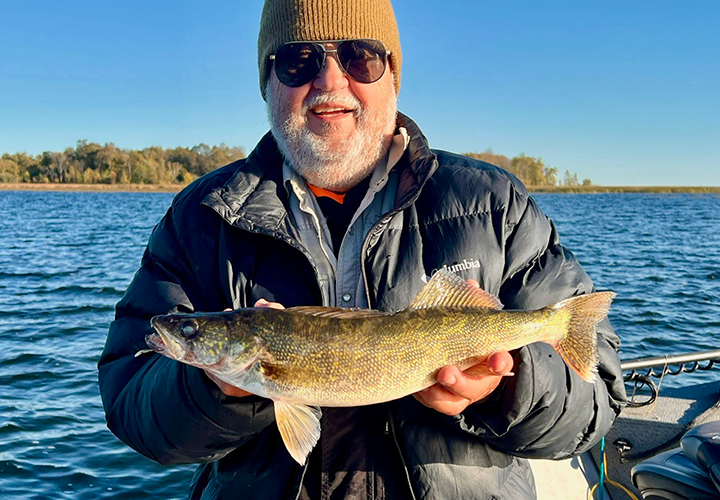 After getting our butts handed to us by the windstorm last Sunday, Tuesday’s frosty morning air felt better. Even if I couldn’t feel my fingers tying the jig on my line, at least I could stand up without having my whiskers blown off.
After getting our butts handed to us by the windstorm last Sunday, Tuesday’s frosty morning air felt better. Even if I couldn’t feel my fingers tying the jig on my line, at least I could stand up without having my whiskers blown off.
Cruising along Winnie’s western shoreline to our starting spot, I watched my graph to observe the surface temperature. Averaging 61 degrees, I was hoping that the water was still warm enough for the fish to be active. Hoping too that the light chop on the surface would be enough to offset the bright sunshine, I stopped at the first spot that offered a good drift. A shallow, 5-to-7-foot breakline, adjacent to a large flat that has mixed patches of wild celery, clasping leaf pondweed and other vegetation. I set up drift, using 1/8 ounce jigs and fatheads, and focused on the deeper, 7-foot portion of the breakline.
The boat was quiet, neither I nor Ken had much to say. I think we were both silently wondering if the slow start was setting the stage for a tough day of fishing. The elapsed time was probably only 15 minutes or so, but the lack of action made it feel like hours. Thankfully, one of us got a bite, and then the other and before long we’d boated a few walleyes. The first, a 13 incher was rejected, but the next 2-, 14- and 15-inch fish were dropped into the livewell. A couple more small ones were released, and then a small school of keeper size perch kept us busy for a time.
The reason for the sudden pick up in action was that I stopped working the deeper breakline edges and allowed the boat to drift shallower, on top of the 5-foot deep weedy flat. It appeared that the vegetation was more important than the breakline, or so-called “structure” for finding and catching fish. I was happy that we were catching perch, but the mission to get Ken some walleyes was the priority and they had now disappeared. So, we made a move, heading for another weedy shoreline flat.
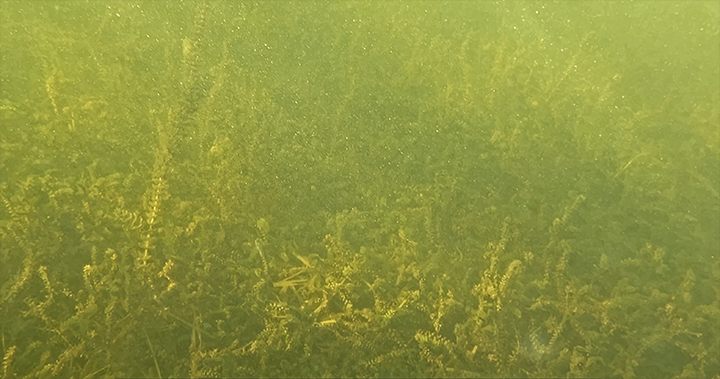 My second stop didn’t work out well, we were fishing on the protected shoreline, and the surface was flat calm. Here, the fish were hunkered down, and unwilling to move out of the grass to strike. There may have been a way to fix that, but at the time, I didn’t think of it; I’ll come back to that thought in a few minutes.
My second stop didn’t work out well, we were fishing on the protected shoreline, and the surface was flat calm. Here, the fish were hunkered down, and unwilling to move out of the grass to strike. There may have been a way to fix that, but at the time, I didn’t think of it; I’ll come back to that thought in a few minutes.
As I moved down the shoreline, I wasn’t heading for any specific spot. Instead, I watched for any area with larger waves breaking the surface. My only consideration was to find a “drift-able” breakline adjacent to a grass covered, shallow water flat. I spotted on, stopped there and set up for another drift. This time holding my boat in shallower, 5- to 6-foot-deep water, I mentioned to Ken, “sometimes the fish sit higher on topo of the bar, try casting your jig up into the shallower water and working it back out toward the breakline.” He did, and it worked, a nice keeper walleye, followed by a variety of others, were added to our larder.
As we drifted through the area, the walleyes made it clear to us that out was vegetation, not structure, that they preferred. I’d go so far to say that if we weren’t tickling weeds, then we wouldn’t catch fish, not only walleyes, but any fish. Perch, pike and walleyes were sharing the weeds for cover, and so were the forage fish they were feeding on. Almost any patch of grass I could find had a few fish in them, albeit not always the fish we hoped for.
By midafternoon, we’d sorted out 6 nice walleyes, 15 to 17-1/2 inches long for Ken. For me, smaller fish from 14 to 14-1/2 inches would be utilized for a fish fry, scheduled with my crew and the Hippie Chick for later today. “Let’s go try that spot where we caught those nice perch last year”, Ken said. I agreed but wanted to first check out a couple spots along the way. After those spots failed to produce the desired results, we moved to Ken’s requested spot. A shallow backwater flat that features even heavier weeds than those we’d been fishing.
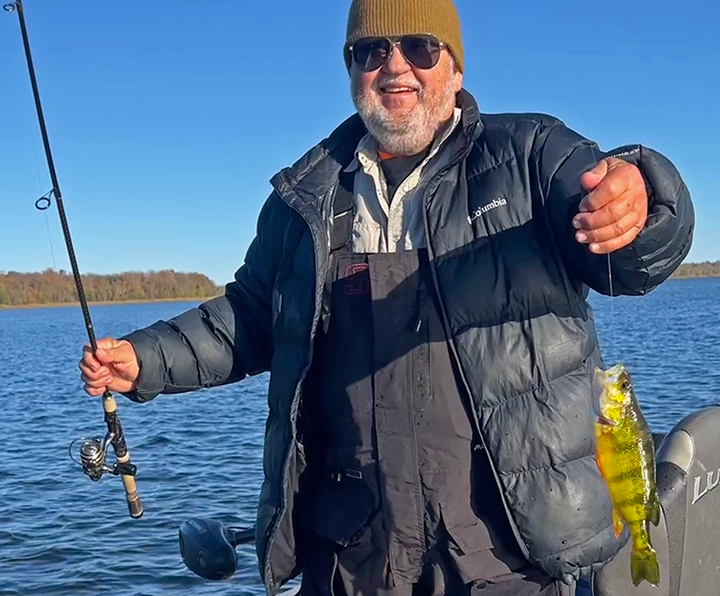 Upon arrival, we set up a drift along the shallow breakline. In the heavy weeds, moving our lures through the cover was difficult. Being snagged constantly forced us to fish fast, jigging a lot to keep the baits free of weeds. Perch, mostly small ones, picked at the tails of the minnows, rarely getting hooked, but frequently stripping the minnows from our jigs.
Upon arrival, we set up a drift along the shallow breakline. In the heavy weeds, moving our lures through the cover was difficult. Being snagged constantly forced us to fish fast, jigging a lot to keep the baits free of weeds. Perch, mostly small ones, picked at the tails of the minnows, rarely getting hooked, but frequently stripping the minnows from our jigs.
“Do you have a bobber in this boat?” Ken inquired. “Sure I do”, I replied as I began searching for them. Ken clipped on a 1 inch foam float, about 3 feet above the jig and minnow. Suspended ovber the weed tops, the slower, more deliberated presentation worked well. In fact, if there had been more large perch on the flat, I would have said it was fantastic. Little perch, 5 to 7 inches long dominated the action, but every so often, Ken picked up a keeper. It worked well enough for me to wonder if the bobber trick would have helped us in the calm spot I mentioned earlier, stop number 2.
Okay, so that’s the Winnie update, limited as it is, from Tuesday. My takeaway, for the areas we fished was simple, no weeds = no fish! That said, we did not fish any water deeper than 7 feet because we didn’t need to. The forecast for today may require more creativity, a calm, southerly breeze is forecast to replace the brisk northwest wind. So, under sunny skies and a calmer surface, fishing deeper water may be necessary. As always, you can count on me to let you know tomorrow, so please tune back in for that. ![]() — Jeff Sundin, The Early Bird Fishing Guide Office Cell Call or Text 218-245-9858 or Email on Facebook on X
— Jeff Sundin, The Early Bird Fishing Guide Office Cell Call or Text 218-245-9858 or Email on Facebook on X
 October 7, 2025 "Settling the Settle-Able: Post Cold Front Panfish"
October 7, 2025 "Settling the Settle-Able: Post Cold Front Panfish"
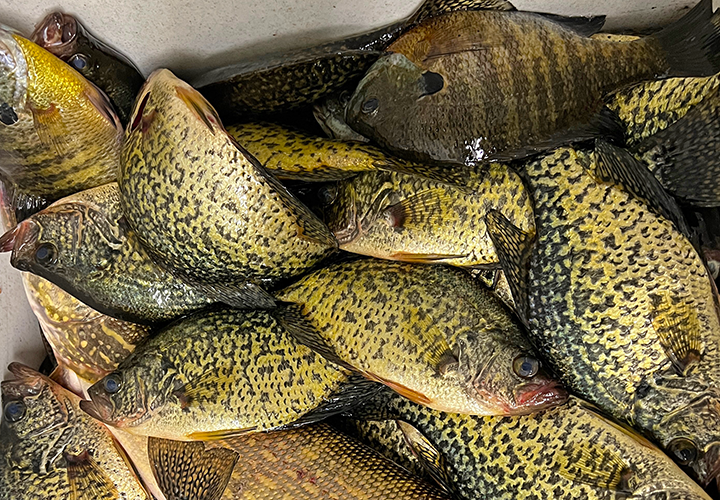 In the aftermath of Sunday’s blast of cold air rushing into north central Minnesota, I observed panfish moving, but not far away from their summertime habitats. Early fall locations that were void of fish last week, were now filled with fish, albeit less active than I’d have liked.
In the aftermath of Sunday’s blast of cold air rushing into north central Minnesota, I observed panfish moving, but not far away from their summertime habitats. Early fall locations that were void of fish last week, were now filled with fish, albeit less active than I’d have liked.
The moderate, 1000-acre lake we visited is known as a mixed species lake. There are decent numbers of walleye, bass, crappies and sunfish. When we arrived at the landing, I was surprised by the warm surface water. The temperature, 65 degrees, was a contrast from the mid-40-degree air and felt warm to the touch. It made me hopeful that fish would remain active, despite the sharp dip in overnight air temperatures. There was still a stiff wind from the west, and I hoped that the “walleye chop” on the water would be helpful as well.
My crew, like most of my customers, hoped to catch some walleyes, and we tried them in several spots and using several presentations. Along the way, we discovered that whether we jigged, wiggle-wormed, or trolled spinners, walleyes were the only fish we couldn’t catch. Randy caught the single lonesome walleye, a 14 incher, that struck a spinner tipped with a fathead.
Conversely, largemouth bass, northern pike, perch, crappies, sunfish we all willing to strike. So, seizing the opportunity, crappie fishing became my plan b for this lake. At first, I imagined catching then quickly, and making a short drive over to Lake Winnie to target walleyes. The project wound up taking all day long, so for a number of reasons, the move to Winnie didn’t happen on Monday.
Adjacent to shallow structures like weedy flats, shoreline points and shallow sunken islands, crappies and bluegills were stacked up. Most fish were suspended, holding 8 to 15 feet below the surface, over about 25 feet of water. Some schools of fish were large, some were small. Some schools of fish were tightly gathered and some were loosely formed. No matter how many fish I located in any one spot, only a small portion of them relative to the overall size of the school would strike. So, while we ended the day with full limits of crappies for my crew, the intensity of action was moderate.
Presentations for panfish vary, but for me, holding the boat steady in the whitecaps was tricky. For my crew, finesse methods like vertical jigging were tricky too, feeling strikes, and matching the depths of suspended fish was right complicated. An experiment with trolling spinners over the suspended fish provided some positive results. I don’t believe that it was the most efficient way to catch crappies yesterday, but it worked. We’d pick off a few fish as we passed over the scattered schools of fish. It was an easier way to stay in contact with ours lures, so I stuck with it to catch panfish.
The bass and northern pike were more responsive to jigs and minnows. Fishing the weed edges in 9 to 12 feet of water, we caught numerous small bass, along with a few larger ones. Northern pike, mostly small were in the same territory, one of them, a 31-inch fish came boatside for Tony. Perch were plentiful, but too small to interest us and like I said, walleyes had the lock jaw.
I’m at the end of my time in the office, and need to get out of here. But I have some notes from friends who fished on Lake Winnie yesterday. That’s where I’m headed now, and I’ll have that report for you tomorrow morning. In the meantime, if you were fishing for crappies, sunfish or bass in the weeds last week, try checking the deeper structure located immediately adjacent to those locations. Let me know if that pattern works for you. ![]() — Jeff Sundin, The Early Bird Fishing Guide Office Cell Call or Text 218-245-9858 or Email on Facebook on X
— Jeff Sundin, The Early Bird Fishing Guide Office Cell Call or Text 218-245-9858 or Email on Facebook on X
 Wired2Fish "Bass Fishing’s Boy Wonder: The Meteoric Rise of Trey McKinney"
Wired2Fish "Bass Fishing’s Boy Wonder: The Meteoric Rise of Trey McKinney"
 "“You gotta pay your dues.” That once was an unwritten rule in the world of professional bass fishing. The old pros would say, “It takes time before you can work your way to the top of the game.”
"“You gotta pay your dues.” That once was an unwritten rule in the world of professional bass fishing. The old pros would say, “It takes time before you can work your way to the top of the game.”
But Trey McKinney apparently never got that message. At age 20, he already is accomplishing things anglers twice his age haven’t.
What’s With This Kid? Just eight or nine years ago, he didn’t know much about tournament bass fishing and seemed destined to follow in his parents’ footsteps as rodeo barrel racers. But his love for bass fishing led him on a different path. He was brought up in southern Illinois, not exactly a hotbed for bass fishing. But he credits his childhood days with teaching him important lessons about how to catch big largemouth. “We have mostly small lakes in the area where I grew up (in Marion, Ill.) ,” he told Wired2fish. “What I learned most is how to ..." Read Full Article and Learn More >> Bass Fishing’s Boy Wonder: The Meteoric Rise of Trey McKinney
 Lake of the Woods, LOW Tourism, October 7, 2025
Lake of the Woods, LOW Tourism, October 7, 2025
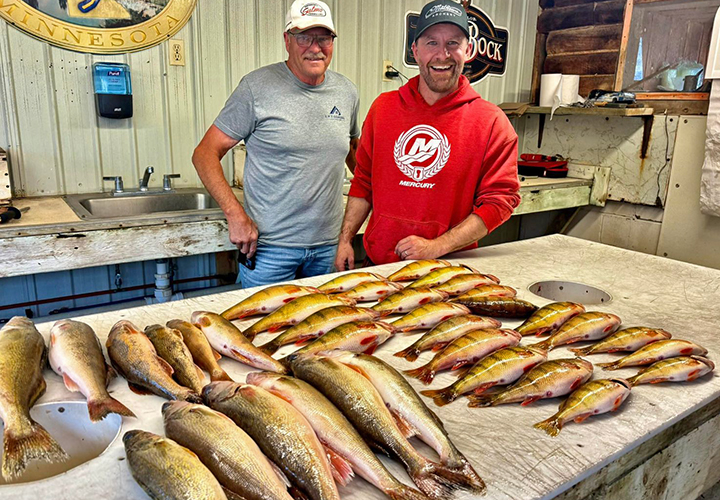 "Walleyes are stacking up along the south shore of Lake of the Woods. Various schools of walleyes are located across the south shore in areas such as Pine Island, Lighthouse Gap, Morris Point, Zippel Bay, Long Point, and Twin Islands. All year long, walleye anglers have been catching good numbers of bonus jumbo perch. The lake is full of them and that trend continues.
"Walleyes are stacking up along the south shore of Lake of the Woods. Various schools of walleyes are located across the south shore in areas such as Pine Island, Lighthouse Gap, Morris Point, Zippel Bay, Long Point, and Twin Islands. All year long, walleye anglers have been catching good numbers of bonus jumbo perch. The lake is full of them and that trend continues.
Weather has been unseasonably warm and water temps are holding in the low 60's. Despite the "summer like" weather, days are getting shorter and this is kicking fall patterns into gear. Additionally, more traditional fall temps are in the forecast and this too will turn the walleyes on even more.
The best bite this week has occurred in 17 to 27 feet of water. Vertical jigging with a frozen emerald shiner this time of year is definitely the goto presentation, however, those trolling crankbaits are still having good success.
Hot jig colors. Lake of the Woods has stained water from the natural tannins in the water. This causes the walleye and sauger bite to be good during the day. Stained water is also conducive to certain colors, specifically gold or gold combined with other bright colors such as orange, chartreuse, pink, and glow white.
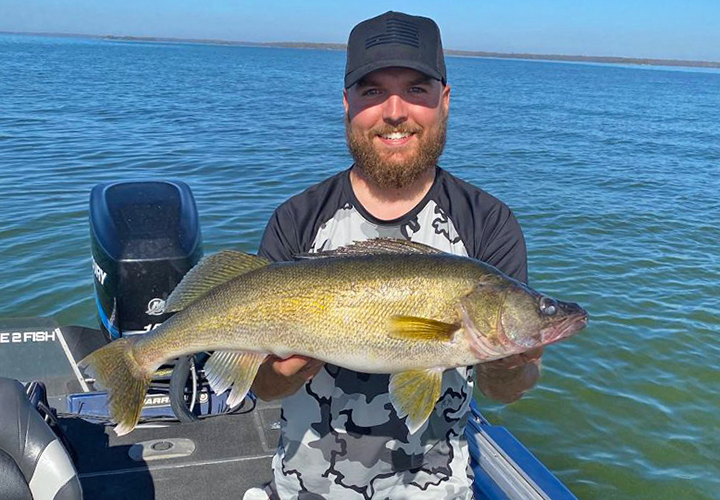 Emerald shiners continue moving into the Rainty River and walleyes are following close behind. The bite is good, but cooler weather and water temps will kick things into high gear. A jig and frozen shiner along current breaks, deeper holes, and sand flats.
Emerald shiners continue moving into the Rainty River and walleyes are following close behind. The bite is good, but cooler weather and water temps will kick things into high gear. A jig and frozen shiner along current breaks, deeper holes, and sand flats.
Sturgeon action remains good. A classic sturgeon rig with crawlers (optionally tipped with a shiner) has been effective. The sturgeon catch-and-release season is upon us and continues through April 23, 2026. The Rainy River offers about 42 miles of navigable water from Wheeler’s Point through Baudette to Birchdale, with numerous public ramps for access.
At the Northwest Angle, walleye fishing is just flat out good right now! Actually, it has been all summer long. Anglers find good fishing on both sides of the border. Again, a jig and minnow on points, over reefs, neck-down areas, and mud-to-rock transitions. Saugers, jumbo perch, crappies, smallmouth bass and pike are in the mix. Fall crappie anglers are reporting nice catches.
A jig and minnow off of points and in deeper water off of structure. Electronics help to find the crappies. Muskie activity traditionally increases as days get shorter and water cools. We have one of the two and things will only get better into the rest of October.
Get in on a last minute fall trip and plan for ice… Charter boats and guides are rolling through October, a few into November. Fishing is excellent and now is a great time to slide up." — Lake of the Woods Tourism, (800) 382-FISH
 October 6, 2025 "Turning the Turn-Able"
October 6, 2025 "Turning the Turn-Able"
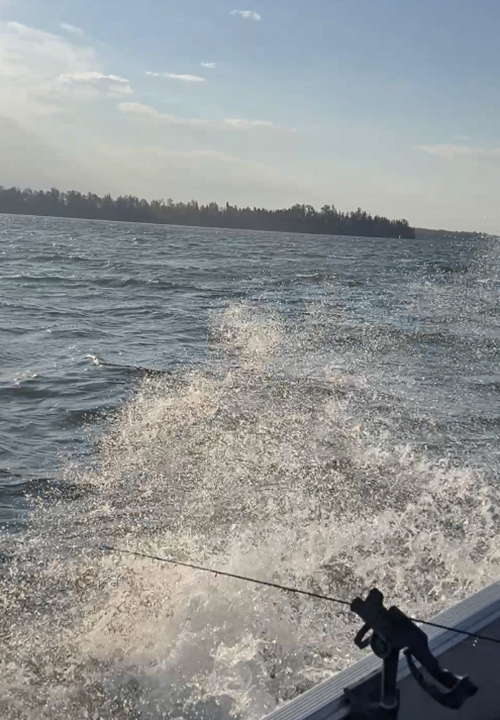 Turnover in natural lakes, an often misunderstood occurrence is in the news, again.
Turnover in natural lakes, an often misunderstood occurrence is in the news, again.
You know that the “teasers” I post on Facebook are not full reports right? What they are, are reminders that a new report has been posted to either fishrapper.com or jeffsundin.com. Typically, there’s a paragraph or two aimed at giving readers an idea of the information contained in the full article. At the end of the “teaser”, there’s a link that leads readers to the full report.
Okay, so when a reader follows the link, and then reads the full report, they find more links, ones that allow them to contact me directly via email, texts and the like, with their comments. I love it when folks take advantage of those, comments, questions, advisories, whatever, I love them all. So, I think you can understand what I’m hoping will happen.
The problem with using so-called social media is that often, folks react to a teaser, or to an image without taking the time to digest the full content of an article. When that happens, they sometimes offer a knee-jerk reaction that is taken out of context by other “social” media users who also do not read the full article; and that’s bad. It’s bad because then I, or somebody, has to go back and repair whatever damage is done by repeating someone’s mistaken, or ill thought through public commentary.
Okay, so the repair job I’m working on this morning concerns the topic of turnover in natural lakes. The topic, often covered, but seldom covered accurately comes up every fall and it should. It should because the impact on fishing before during and after a lake turnover affects where, when and how we fish.
On October 2, 2025, on Fishing Reports Minnesota, I “teased” readers with “Sundin: "Surface water temperatures held steady at about 65 degrees on Wednesday. Thoroughly mixed from top to bottom by the constant churning, the water was “turned over” in most of the lake’s littoral areas. The term littoral refers primarily to a lake’s shallower shoreline regions but could also include shallow mid-lake flats and bars. For Lake Winnie, this means that about 19,000 acres of water was mixed, or “turned over” by yesterday’s turmoil. Fish in those areas will ..." Read Full Update >> October 2, 2025 "Turning the Turn-Able"
A reader comment, responding to that “teaser” says; “Turn over happens when the beeper water (typically 39 F or 4 C waters densities temp) and the top of the water becomes the same temperature. That makes there densities the same and they can mix. Wind camp speed that up but I am pretty sure with temp in the 60s turn over is a ways out.”
The comment, misspellings aside, is technically, but only partially correct. First, there was no claim that that Lake Winnie had completely “turned over”, even without reading the full article, any reader can clearly see that the article says, “Thoroughly mixed from top to bottom by the constant churning, the water was “turned over” in most of the lake’s littoral areas.” It goes on to advise, “For Lake Winnie, this means that about 19,000 acres of water was mixed, or “turned over” by yesterday’s turmoil.”
There is more than one kind of turnover, and they occur multiple times every season. While the reader was technically correct about the final, thermal turnover that happens during late fall, or early winter, there are also other turnover events that occur at random intervals and may impact only certain regions, portions of a lake, or some isolated lakes in a region, while others remain unaffected.
Would you enjoy more information about what these turnovers are, why they occur, and how they affect your fishing? Then follow this link to the article, “Fishing the Fall Turnover in Natural Lakes”. If after reading the full article, you have more questions about what turnover is, and how it occurs, let me know and I’ll provide you with additional updates.
OH! And it happened again on Sunday. Waves crashing over the side of my boat, whitecaps rolling across shallow flats, northern milfoil plants floating free across the entire lake. Fishing in the aftermath of yesterday’s wind storm will be the subject of tomorrow’s report. ![]() — Jeff Sundin, The Early Bird Fishing Guide Office Cell Call or Text 218-245-9858 or Email on Facebook on X
— Jeff Sundin, The Early Bird Fishing Guide Office Cell Call or Text 218-245-9858 or Email on Facebook on X
 October 5, 2025 "Chilling the Chill-Able"
October 5, 2025 "Chilling the Chill-Able"
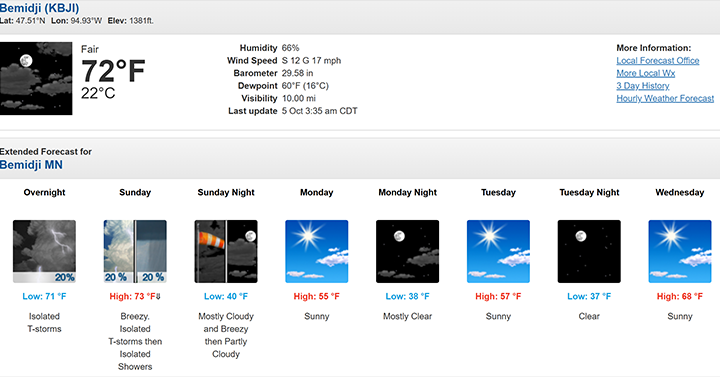 The recent dialogue, focused on unusually warm weather, and non-typical fishing patterns is about to change. A cooling trend is on the way, and despite the image of this calm, morning fog near Max Minnesota, it’s gonna be a turbulent day on the lake. Today’s forecast calls for strong winds, gusting up to 40 MPH, driven by cold air. Tomorrow’s overnight low is projected to be 30 degrees lower than today’s 71 degree reading.
The recent dialogue, focused on unusually warm weather, and non-typical fishing patterns is about to change. A cooling trend is on the way, and despite the image of this calm, morning fog near Max Minnesota, it’s gonna be a turbulent day on the lake. Today’s forecast calls for strong winds, gusting up to 40 MPH, driven by cold air. Tomorrow’s overnight low is projected to be 30 degrees lower than today’s 71 degree reading.
The full impact on surface water temperatures remains to be seen but impacted they will be. Currently, 64 to 69 degrees is a fair estimate of what you’d find this morning on north central Minnesota lakes. My guess is that within the week, we’ll see readings fall into the high 50s on shallow water lakes, and low 60s on deeper ones, more capable of retaining warmth.
Despite warm weather, we’ve already seen some fish transitioning into fall feeding patterns. So, the real impact on fishing patterns will be more dramatic on some lakes than it will on others. Deeper water lakes with vegetation like cabbage, coontail and eelgrass that hold baitfish now, may undergo a robust transition as cooling water forces minnows and baitfish toward the outer edges of the weeds. Anglers fishing these lakes could notice an uptick in walleye, crappie and perch feeding activity.
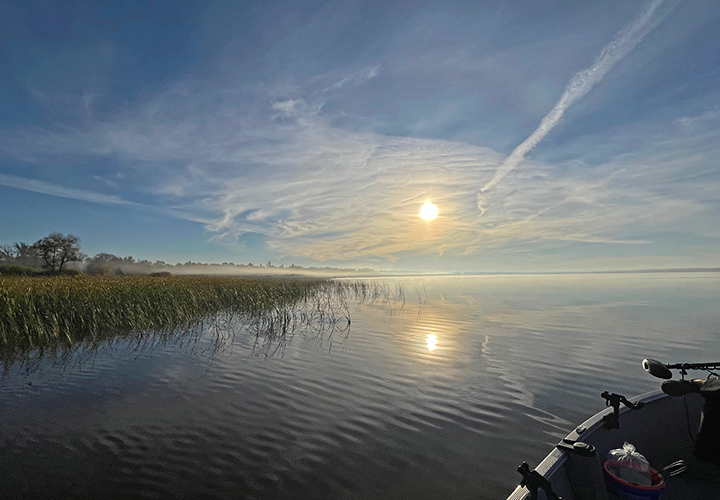 Conversely, vegetation in shallow lakes, home to more delicate vegetation like northern watermilfoil, filamentous algae and other pondweed varieties have changed a lot already and may seem less dramatically impacted.
Conversely, vegetation in shallow lakes, home to more delicate vegetation like northern watermilfoil, filamentous algae and other pondweed varieties have changed a lot already and may seem less dramatically impacted.
During my fishing trip with Dale and Colten on Friday for example, I found myself attempting to find a large patch of northern watermilfoil that had completely disappeared. That’s right, a depression, or so-called hole, located on a large flat was previously surrounded by shallow weed growth just one week ago. Last week, I reported about the experience in my reports, and you can read the full (September 25, 2025) article if you like. On Friday, (October 3, 2025), that entire weed bed was gone, and the fish were gone too. Except of a couple of small pike, the hole had been completely vacated.
Jeff, how is this possible, you’re asking? Well, weeds like the northern milfoil grow on expanses of shallow, sandy flats. Even if the weather has been warmer than usual, it doesn’t stop submerged plants from maturing. So, once they mature, and begin to die off, any strong wind can come along and uproot them. That’s what happened last Wednesday during the huge turnover triggered by strong and gusty south winds.
To find fish on Friday, I had to move to the other side of the lake, the southern shorelines that were protected from Wednesday’s south winds. There, we discovered weeds, and in the weeds, we discovered fish. Walleyes, perch and even pike were active, but scattered. To catch them, I needed to cover a lot of territory, but once found, they struck willingly. That signaled me that fish are hungry, and in their “fall feeding mode”.
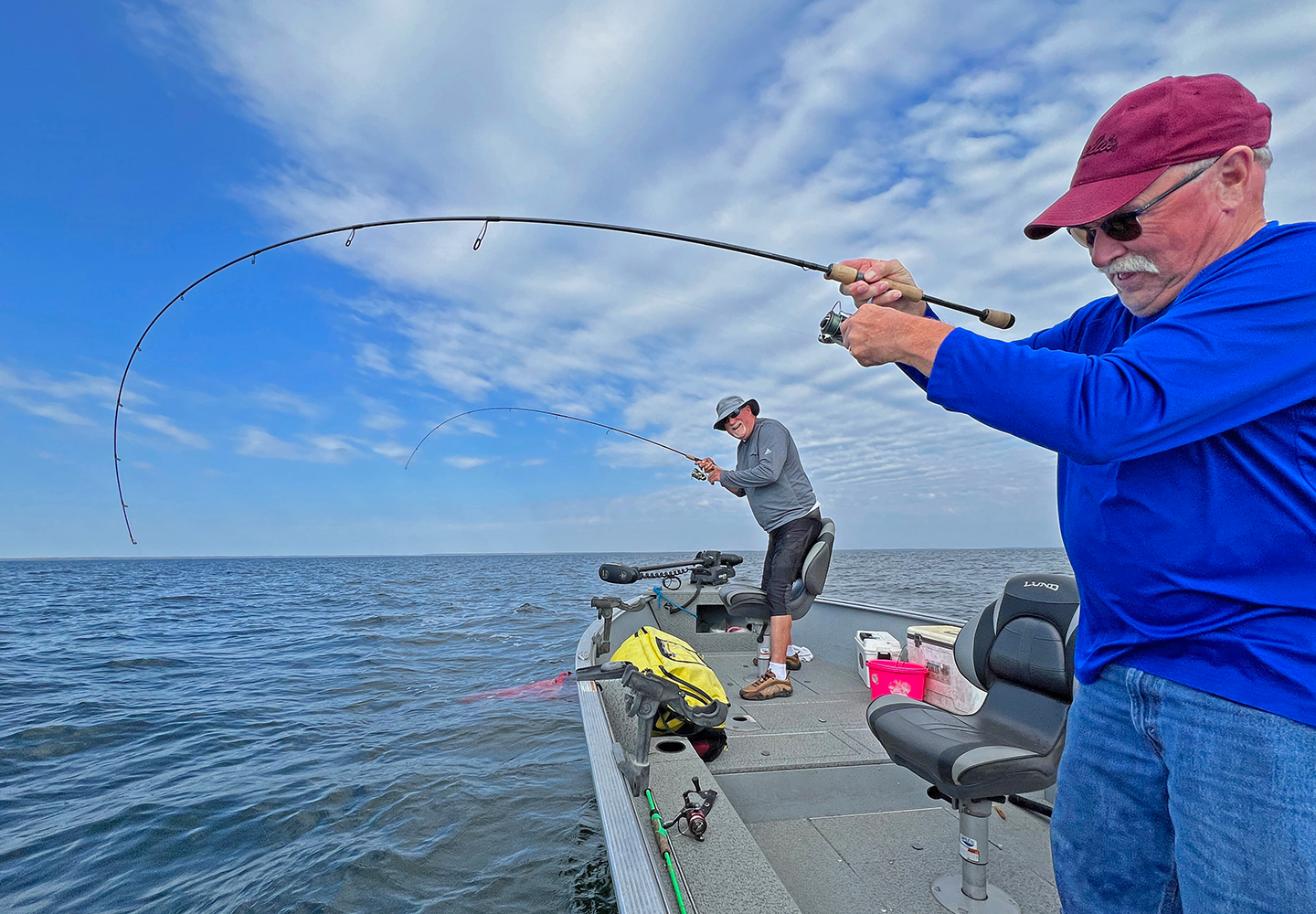 Also interesting was the intensity of fish activity on Lake Winnibigoshish. Last week, I fished with a group that comes up for 3 days every fall. For the most part, we caught fish on all 3 days, but they weren’t always the fish we were looking for.
Also interesting was the intensity of fish activity on Lake Winnibigoshish. Last week, I fished with a group that comes up for 3 days every fall. For the most part, we caught fish on all 3 days, but they weren’t always the fish we were looking for.
On Tuesday, we caught a number of walleyes that were in the protected, 18-to-23-inch protected slot by fishing in 16 to 18 feet of water. Looking for “eaters”, we moved to the shallows and caught small fish in 6 to 8 feet of water. We harvested what we needed for dinner, but the fish were not impressive. We hooked into numerous 12-to-13-inch fish that were released. Using a 14 inch minimum size threshold, we were only able to gather 8 so-called “keepers”.
On Wednesday, during the gale force winds, we found a massive school of perch. I’d estimate that they spanned a distance of ½ mile along the shoreline. On of the days, those fish will provide a lot of angling fun, but right now, they are simply too small to be of interest. We caught dozens of 6 to 8 inch fish and were teased occasionally by an almost keepable 9 inch fish. Moving away from that school, and searching for singles and doubles, we found a handful of keepers, but the action for them was much slower.
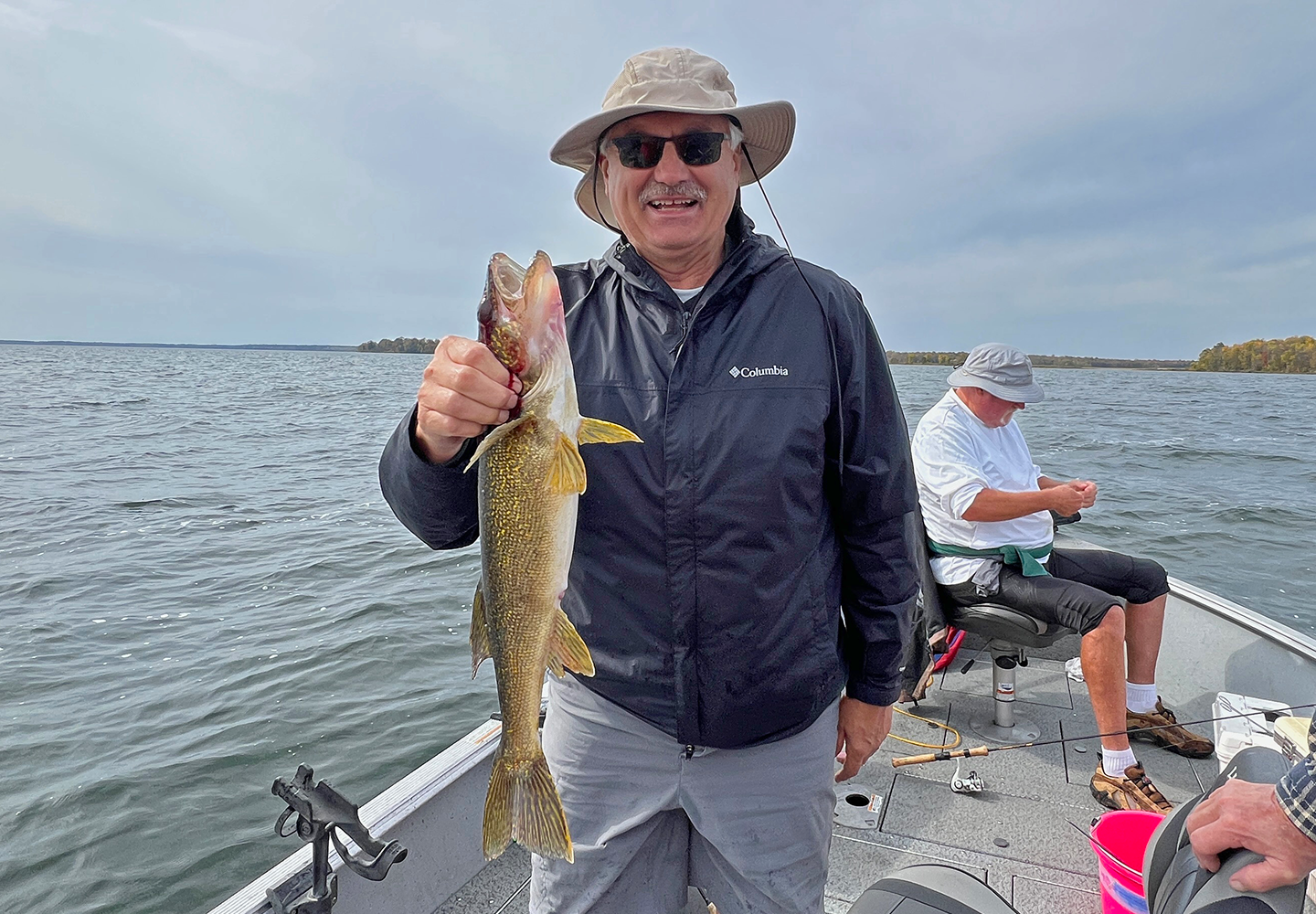 Later that day, I talked to a group of anglers in the fish cleaning shack while they cleaned what appeared to be a full 4-person limit of walleyes. Again, the fish were mot impressive, ranging between 13 and 15 inches, but for them, it was a good day. I did ask how that were caught, and they told me that they were jigging. They didn’t offer more details, and I didn’t press them for information. Still, it was an indication that when located, the fish are biting, we just have to cover territory to find them.
Later that day, I talked to a group of anglers in the fish cleaning shack while they cleaned what appeared to be a full 4-person limit of walleyes. Again, the fish were mot impressive, ranging between 13 and 15 inches, but for them, it was a good day. I did ask how that were caught, and they told me that they were jigging. They didn’t offer more details, and I didn’t press them for information. Still, it was an indication that when located, the fish are biting, we just have to cover territory to find them.
On Thursday, our goal was to catch and release larger walleyes. I returned to fishing on the shoreline breaks and focused on 16 to 20 feet of water. This plan came together; we caught and released upwards of 20 walleyes ranging in size from 19 to 23 inches. Jigs and minnows, along with Lindy Rigs and lively creek chubs were effective. Again, the fish were scattered, appearing on my graph as singles and doubles. But when I saw a fish, we could get it to strike, that’s the good news.
The bad news, for folks searching for keepers, is that this pattern will not work. For almost the entire day, we did not catch anything that qualified for the creel. At our last stop, we did catch a pair of 17-inch fish, which were an anomaly, I believe. This pattern, at least for now, appears to be workable only for those who can be content with catch, photo and release fishing only. Provided the fish remain on the shallow side of the breaks, I may do it again this week, but I suspect most of my customers will prefer targeting keepers.
Today, as the cold front closes in on us, and we receive another blast of strong winds, I plan to hide out on a smaller lake. I haven’t yet decided which one, but it will likely be someplace I haven’t visited recently. With luck, I’ll find them in a feeding mood, and have good news to share tomorrow, we’ll know that soon.
 I’ve been looking at my calendar and see that after this 8-day string of charters, I’m technically done for the season. But looking at the weather, and watching the water temperatures on lakes I’ve visited, I’m considering an extension. I’m thinking that I’ll use the surface temperatures to guide me, keeping the calendar open until water cools down to about 55 degrees. You, if you like, may be able to take advantage of the extension. If you’re thinking about making one more fishing trip this fall, let’s chat about the possibilities.
I’ve been looking at my calendar and see that after this 8-day string of charters, I’m technically done for the season. But looking at the weather, and watching the water temperatures on lakes I’ve visited, I’m considering an extension. I’m thinking that I’ll use the surface temperatures to guide me, keeping the calendar open until water cools down to about 55 degrees. You, if you like, may be able to take advantage of the extension. If you’re thinking about making one more fishing trip this fall, let’s chat about the possibilities.
Finally, more chatting about fishing is on my schedule for later this evening. Reel Talk Outdoors radio brings Tom Neustrom along with Larry Hanson to talk about all things outdoors. The program airs every Sunday evening on BOB Total Country, 105.5 FM St. Cloud, 106.1 Twin Cities, and 107.5 Faribault Minnesota. “Reel Talk Outdoors presents interviews with outdoors newsmakers, live call-ins, and stories to bring a new generation into the great outdoors,” their website proclaims.
I’ll be on the program tonight, from 7:00 to 8:00 PM with Neustrom, along with call-ins and other guests. We’ll be talking about current fishing conditions, predictions for this fall, forward facing sonar, year around bass fish seasons and more. Tune in, call in, or email your questions, we’ll get your concerns into the conversation. ![]() — Jeff Sundin, The Early Bird Fishing Guide Office Cell Call or Text 218-245-9858 or Email on Facebook on X
— Jeff Sundin, The Early Bird Fishing Guide Office Cell Call or Text 218-245-9858 or Email on Facebook on X
 Cutfoot Sioux and Lake Winnibigoshish Fishing Report October 3, 2025
Cutfoot Sioux and Lake Winnibigoshish Fishing Report October 3, 2025
 "It’s not easy talking about the end of our fishing season when the weather is warm, sunny and anything but fall-like. Still, the calendar tells us that it’s time to begin the wind down in preparation for winter. As we issue this final report of the fishing season, we want to be sure that you know how much we appreciate you for taking time to check in with us, thank you!
"It’s not easy talking about the end of our fishing season when the weather is warm, sunny and anything but fall-like. Still, the calendar tells us that it’s time to begin the wind down in preparation for winter. As we issue this final report of the fishing season, we want to be sure that you know how much we appreciate you for taking time to check in with us, thank you!
Over the past week, water temperatures have remained stable, locked into the middle of the 60-degree range. We see 65-to-66-degree readings at almost every stop on Big Winnie and in the Cutfoot Sioux chain, slightly warmer, reaching 68 to 69 degrees in calm, protected areas. Despite mostly sunny conditions, algae blooms are minimal, and in most regions, water clarity is on the rise. Secchi disk readings of 8 to 12 feet are common, but slightly dingier water can be found in shallow back bays and flowages.
Walleyes, perch and pike activity has generally increased, and at times fishing can be quite good. There are times though, like calm and sunny periods when fish activity can be slow. Even then, there is always someplace on the lake where the fish ..." Read Full Report >> Bowen Lodge Lake Winnie Fishing Report October 3, 2025
 Wired2Fish "Fall Bass Fishing – Beginner to Advanced"
Wired2Fish "Fall Bass Fishing – Beginner to Advanced"
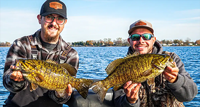 "When the first cool breeze of fall cuts across the lake, and the leaves start to drop, you can almost feel the bass waking up. After a long summer of sluggish days spent hugging deeper water, fall is the time when bass turn on the feedbag. Most anglers know how to catch bass in these temperatures, if they can find them. They sense winter creeping in, and just like deer putting on weight for the cold months ahead, bass go into a full-blown feeding mode.
"When the first cool breeze of fall cuts across the lake, and the leaves start to drop, you can almost feel the bass waking up. After a long summer of sluggish days spent hugging deeper water, fall is the time when bass turn on the feedbag. Most anglers know how to catch bass in these temperatures, if they can find them. They sense winter creeping in, and just like deer putting on weight for the cold months ahead, bass go into a full-blown feeding mode.
For fishermen like you and me, that means some of the best action of the year — if you know how to read the conditions, locate the fish, and present the right bait. I’ll walk you through how bass behave in the fall, where you can expect to find them, and which techniques work best to put fish in the boat.
In fall, bass are transitioning from deep summer haunts to ..." Read Full Article and Learn More >> Fall Bass Fishing Beginner to Advanced
 October 2, 2025 "Turning the Turn-Able"
October 2, 2025 "Turning the Turn-Able"
There are certain days when finding something to do is tricky. Yesterday, whitecaps formed, even on the calm shoreline of Lake Winnibigoshish. Driven by a blistering south wind, the offshore current activated fish, but many of them were simply the wrong ones.
We encountered a school of perch that ran along the shoreline for about a half mile. Yes, I said a half mile long school of perch. The same school of fish will be fantastic news if it happens in 2027, but in the current season, it wasn’t very impressive. Despite catching fish almost constantly, the school offered us mostly nothing in terms of “keepers”. Most fish ranged in size from about 6 to 8 inches, with an occasional 9-inch “almost-a-keeper” in the mix to tease us. If there were walleye or pike located nearby, the voracious perch simply beat them to our hooks.
Once we got away from that maxi school of mini perch, we were able to pick away at some larger ones, and a few slot-walleyes too, but for the most part adding fish to our larder was laborious. The closest thing we had to a good bite happened in about 8 feet of water, over low-lying weed growth. Jigs and minnows worked, so did trolling spinners. In the strong wind, drifting and jigging was easier to do than trolling, so we stuck with that.
Surface water temperatures held steady at about 65 degrees. Thoroughly mixed from top to bottom by the constant churning, the water was “turned over” in most of the lake’s littoral areas. The term littoral refers primarily to a lake’s shallower shoreline regions but could also include shallow mid-lake flats and bars. For Lake Winnie, this means that about 19,000 acres of water was mixed, or “turned over” by yesterday’s turmoil. Fish in those areas will spread far and wide for a time but will begin assembling again once the waters calm. So, for today, the plan is to figure out where we are on the timeline.
For me, there are still a couple of weeks’ worth of trips on the calendar. And if the weather stays warm, I may be interested in adding some more. If you’re thinking about squeezing in one lasty trip to the lake, let me know. We’ll see if there’s a date that interests you. ![]() — Jeff Sundin, The Early Bird Fishing Guide Office Cell Call or Text 218-245-9858 or Email on Facebook on X
— Jeff Sundin, The Early Bird Fishing Guide Office Cell Call or Text 218-245-9858 or Email on Facebook on X
 Ely Area, Arrowhead Outdoors Fishing Report October 1, 2025
Ely Area, Arrowhead Outdoors Fishing Report October 1, 2025
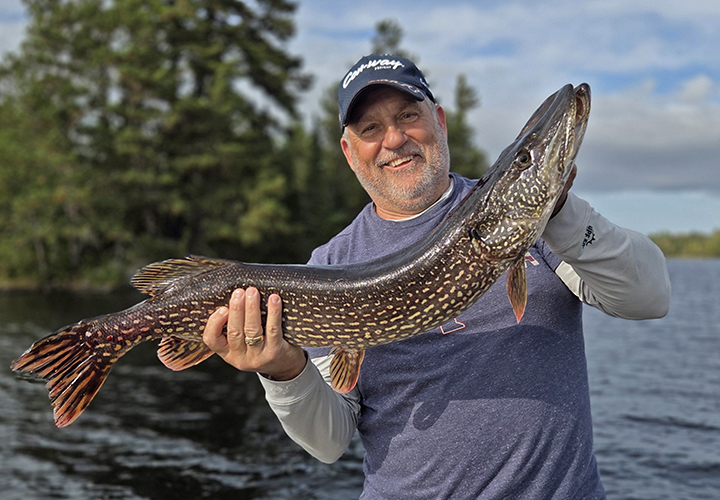 "Walleye - Summer like temperatures have walleyes moving up shallower than normal for this time of the year. 8 to 12 feet of water has been where anglers were finding lots of walleyes this last week. With water temps still reaching into the 70s, crawlers have been holding on but crankbaits, paddle tails, jig/minnow or jig/crawler have all been catching walleyes. Anglers have been finding walleyes out on sunken islands, main lake points and weedlines this last week. Wind has been the key to success here. Windy shorelines or the windy side of the structure has been best. Hot colors remain perch, gold and firetiger
"Walleye - Summer like temperatures have walleyes moving up shallower than normal for this time of the year. 8 to 12 feet of water has been where anglers were finding lots of walleyes this last week. With water temps still reaching into the 70s, crawlers have been holding on but crankbaits, paddle tails, jig/minnow or jig/crawler have all been catching walleyes. Anglers have been finding walleyes out on sunken islands, main lake points and weedlines this last week. Wind has been the key to success here. Windy shorelines or the windy side of the structure has been best. Hot colors remain perch, gold and firetiger
Smallmouth bass fishing to remain very productive, but catching huge numbers of big smallies has become challenging for anglers with these unseasonably warm temps. Small smallies have been plaguing anglers out on the sunken islands. Smallies out here, like the walleyes are being found in 8 to 12 feet of water. Spinnerbaits, crankbaits, drop shotting, paddle tails have all been very effective at catching large numbers of smallies. If your fishing humps and not catching numbers of smallies, you're fishing the wrong ones. Keep moving until you find the numbers.
Pike - Trophy pike fishing continues to be very productive for anglers targeting them. Again, like with the walleyes and smallies, 8 to 12 feet of water has been the depth to find them. Trophy pike have been cruising weedlines, mouths of bays and river mouths looking for an easy meal. Large suckers fished under a bobber have been very effective, but large swim baits, large spoons, and large spinnerbaits have all been catching big pike.
Panfish - Sunfish and Crappies have also been very active this last week. Both fish are being found working green weedlines but at different times of the day. Sunfish have been working weedlines and often inside the weedbeds during the day time hours. Redworms fished under a bobber have been very effective on them. During the last hour of light, the crappies slid up into the weedlines to feed. Anglers have had great success casting small jig/twisters along those same weedlines where they caught sunfish earlier in the day.
Stream Trout - Stream trout anglers reported that stream trout fishing slowed some this last week as water temps reached the 70s. Anglers noted that early morning and later in the evening were the best times to find stream trout more active near the surface. During these times anglers had luck casting small jig/twisters, small spoons or floating a nightcrawler about 5 to 10 feet under a bobber. As water temps rise trout slide down looking for cooler temps. During the day anglers have been having good luck floating a crawler about 2 to 3 feet off the bottom." — Arrowhead Outdoors, 218-365-5358
 Wired2Fish "Texas’ Big Bass Factory: O.H. Ivie Lake"
Wired2Fish "Texas’ Big Bass Factory: O.H. Ivie Lake"
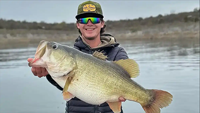 "Dalton Smith remembers the dreary December day in 2022 when he discovered just how special O.H. Ivie Lake is.
"Dalton Smith remembers the dreary December day in 2022 when he discovered just how special O.H. Ivie Lake is.
Fishing with a friend on the reservoir in west-central Texas, he caught the fish of a lifetime – a 14.59-pound Florida strain largemouth bass. That in itself was reason to celebrate. But after taking a lunch break, Smith landed a second bass weighing more than 14 pounds. Two giants, in one day!
“It was overcast and rainy, and those bass were just roaming the river channel, feeding on shad,” Smith told Wired2Fish. “I saw them on my forward-facing sonar, and I got both of them to hit a swimbait. “I doubt if I will ever have another day like that.” But at O.H. Ivie Lake, one of the top trophy bass lakes in the country, anything is possible. Smith, who guides on the lake, is a believer. No one bats an eye when someone catches a 10-pound bass at the ..." Read Full Article and Learn More >> Texas’ Big Bass Factory: O.H. Ivie Lake
 Lake of the Woods, LOW Tourism, October 1, 2025
Lake of the Woods, LOW Tourism, October 1, 2025
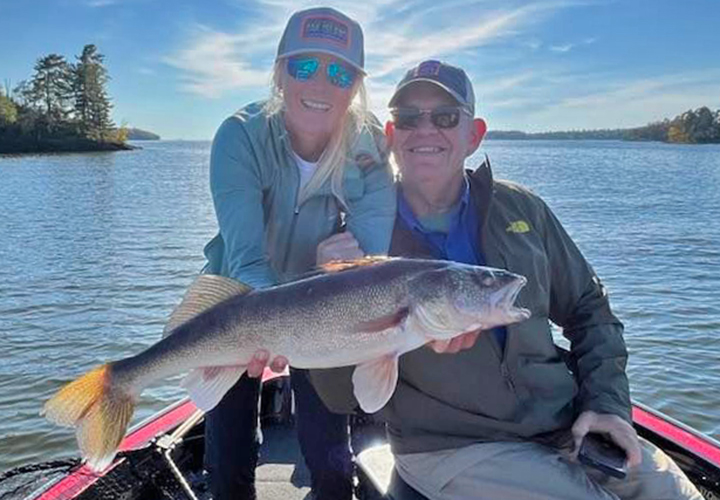 "Walleyes continue to congregate along the south shore of Lake of the Woods. Despite unseasonably warm weather, anglers are putting good numbers of fish in the boat.
"Walleyes continue to congregate along the south shore of Lake of the Woods. Despite unseasonably warm weather, anglers are putting good numbers of fish in the boat.
The best bite has slid slightly deeper this week to 22 to 30 feet. Vertical jigging with a frozen emerald shiner remains the top producer. Hot jig colors have been green, gold, orange, chartreuse, and glow white; on certain days, pink or plain gold still shine.
Schools of walleyes are located across traditional stretches, Pine Island, Lighthouse Gap, Morris Point, Zippel Bay, Long Point, and Twin Islands, with bonus jumbo perch mixed in. While jigging is the go-to, some anglers continue to pull spinners with crawlers or troll crankbaits to cover water when marks are scattered. Expect shoreline activity to strengthen further as temperatures cool.
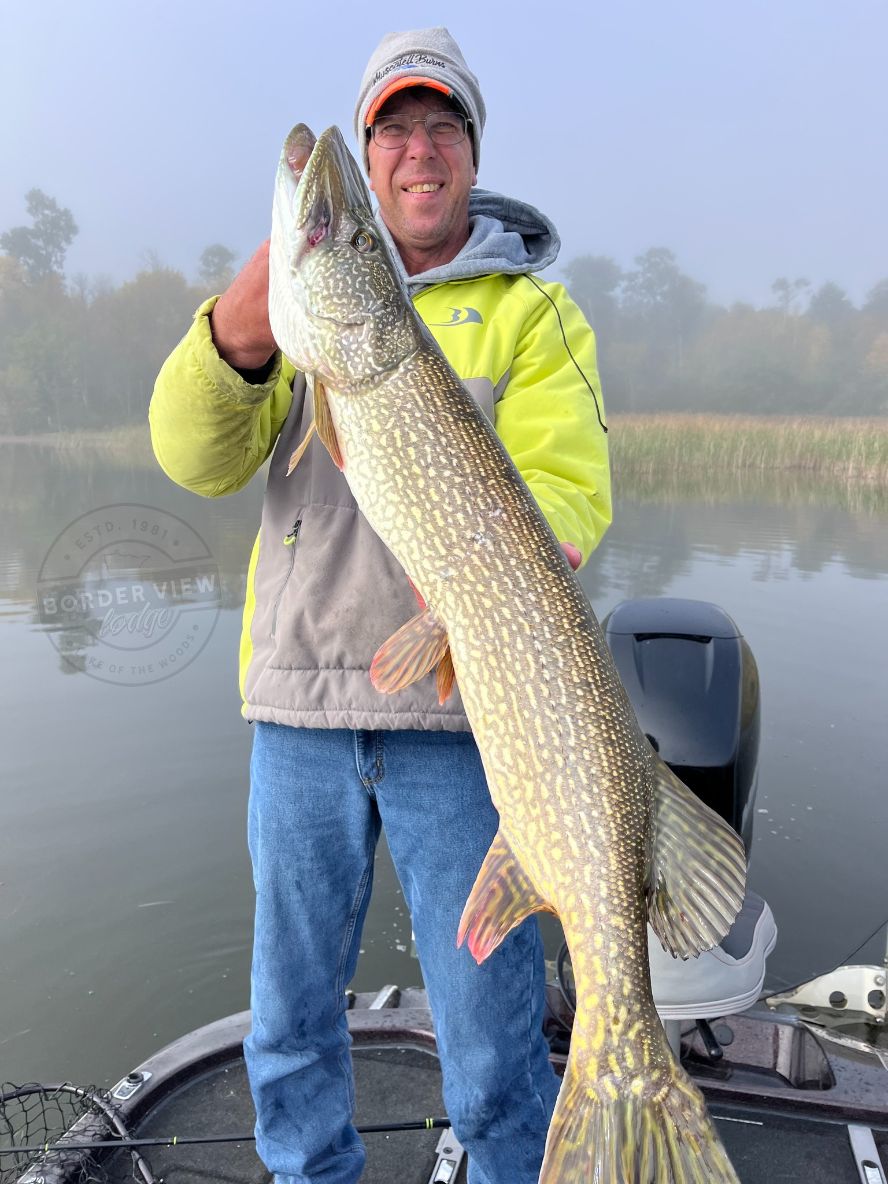 On the Rainy River, Emerald shiners are trickling into the river, and walleyes are following. The bite is improving by the day; a real cool-down will kick things into high gear. Work a jig and frozen shiner along current breaks, deeper holes, and sand flats.
On the Rainy River, Emerald shiners are trickling into the river, and walleyes are following. The bite is improving by the day; a real cool-down will kick things into high gear. Work a jig and frozen shiner along current breaks, deeper holes, and sand flats.
Sturgeon action remains strong. A classic sturgeon rig with crawlers (optionally tipped with a shiner) has been effective. Reminder: sturgeon harvest season is open through September 30, 2025, switching to catch-and-release October 1, 2025 thru April 23, 2026. The Rainy River offers about 42 miles of navigable water from Wheeler’s Point through Baudette to Birchdale, with numerous public ramps for access.
At the Northwest Angle, excellent walleye fishing continues on both the Minnesota and Ontario sides. The program is simple and productive: a jig and minnow on points, over reefs, neck-down areas, and mud-to-rock transitions. Saugers, jumbo perch, and pike are also showing up consistently.
It’s prime time for fall crappies. Many anglers are finding nice fish around islands and off of points. Muskie reports are strong as water temps edge downward, with follows and hookups on shoreline structure.
Plan your fall trip, excellent fall fishing typically runs into November. If you’re looking for that last good open-water trip before ice season, now’s the window." — Lake of the Woods Tourism, (800) 382-FISH
 Wired2Fish "Cody Huff’s Fall Fishing Strategy"
Wired2Fish "Cody Huff’s Fall Fishing Strategy"
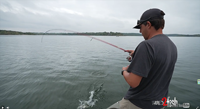 "Fall fishing often means unpredictable conditions and fast-changing patterns. Professional angler Cody Huff shows how he adapts his fall bait rotation to cover water efficiently and stay in tune with bass movements. Huff demonstrates how speed, bait choice, and versatility become crucial when fish are scattered.
"Fall fishing often means unpredictable conditions and fast-changing patterns. Professional angler Cody Huff shows how he adapts his fall bait rotation to cover water efficiently and stay in tune with bass movements. Huff demonstrates how speed, bait choice, and versatility become crucial when fish are scattered.
Offshore and Mid-Depth Adjustments: Fall doesn’t always push bass shallow. Huff also explains how suspended fish often relate to bait schools in open water. To tempt these roamers, he rotates to minnow-style baits on various jig heads, adjusting weight and presentation speed to match fish behavior. This flexibility ensures he can connect even when the shallow bite fades.
Docks, Laydowns, and Heavy Cover: Not all bites come from roaming fish. Huff flips compact jigs into ..." View Video to Learn More >> Cody Huff’s Fall Fishing Strategy
You Are Invited To Become A Duly Deputized Fishrapper Cub Reporter Too!
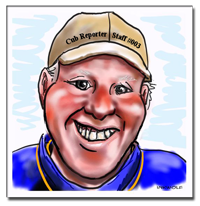 If you've been waiting for a gold engraved invitation to participate in the daily reports, then stop waiting and consider this your own personal invitation.
If you've been waiting for a gold engraved invitation to participate in the daily reports, then stop waiting and consider this your own personal invitation.
Helping your fellow fishermen and women stay abreast of fishing conditions in your area is good for everybody and it's easier than you think! You don't have to write a book, you don't have to share your secret fishing spots and you don't even have to mention your lake. You see, with just a few words about general trends, seasonal patterns or local weather conditions you can help steer your fellow anglers to more gratifying fishing experiences. So, be like Dan and Sean, and become a duly deputized "Cub Reporter", it's good for fishing and that's good for everybody!
Use the Contact Us page, or if you prefer to be "social", use our community page on facebook Fishing Reports Minnesota, that is the Facebook counterpart to this page and it is open to the public, so you can post your own fishing update or just share a photo of a nice catch.